One day during my stay with Paola and Francesco, my Italian friends who have a flat in the town of Riva Ligure on the coast of the Ligurian Sea, I decided to take a trip to a couple of towns to the west. The first place I planned to visit was Bordighera and the second was Sanremo.
Here is a map that, for the visual types and geography lovers, makes it easier to follow my stories about staying on the Italian Riviera in June 2025.
I have already mentioned that upon arrival, during the transfer from the airport in Nice to Riva Ligure, I had the impression that everything somehow dragged on and that the transfer wasn’t as simple as I thought it would be.
Now, when I travelled to Bordighera by a local intercity bus (with a transfer in Sanremo), I was also thinking about how that kind of route works and I decided that on the return to Nice (from where I was supposed to fly back to Belgrade), I would get from Riva Ligure to Ventimiglia using buses only and not a combination of bus and train. It seems to me that this is a significantly better option. There are regular bus lines that cover the “Flower Riviera” (Riviera dei Fiori), with one running between Ventimiglia and Sanremo, and another between Sanremo and Andora (a town that is already in the province of Savona, on the other side of the border of the province of Imperia, the coastline of which actually makes up the Flower Riviera).
After I changed buses at the main station in Sanremo, I headed towards Bordighera, but once there I wasn’t quite sure where I should get off. A woman told me when it was time to leave the bus, so I ended up near a park and there I noticed a sculpture.
I have to admit that I wasn’t prepared for any serious sightseeing and I mostly came here to take a walk by the sea and because I had heard that Bordighera is a beautiful town. But I didn’t know anything beyond that. So, completely by chance (since I think it would’ve been better if I had gotten off at one of the next bus stops), I found myself near this monument and only later did I learn some important details about it.
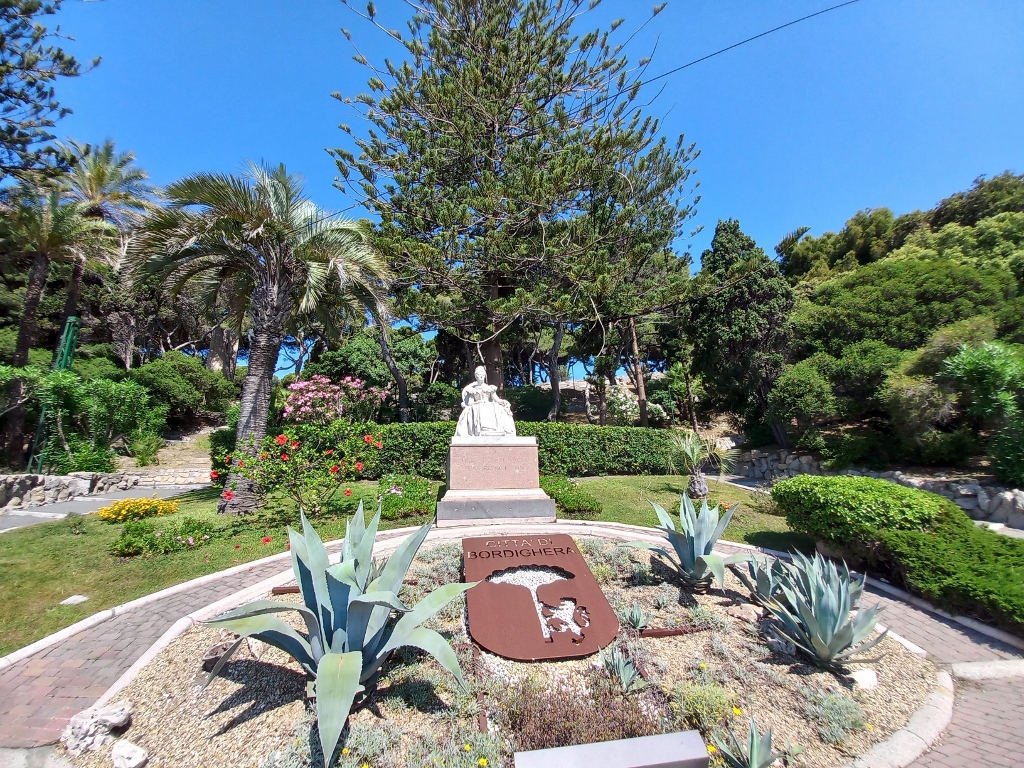 Bordighera, a detail
Bordighera, a detail
More precisely, I found some information not about the monument itself, but about Queen Margherita of Savoy (1851–1926), whom the monument depicts, and who was the wife of Umberto I, King of Italy. However, the connection between the queen and Bordighera isn’t just symbolic – it’s the fact that she had her official winter residence here (Villa Margherita), where she also died in 1926.
Although there’s much more information available about this queen, I’m not particularly fascinated by royal figures, not even by this queen, so I didn’t go further in my “research.” Still, there is one “important” detail related to her. It may seem trivial, but it’s certainly interesting. Namely, she is practically famous, one might say, almost worldwide, because back in 1889, a pizza was created featuring red tomato, white mozzarella and green basil, mimicking the colours of the Italian flag, and it was named after her. That’s the Pizza Margherita.
From the park, I walked to the town centre and first went to the local indoor market.
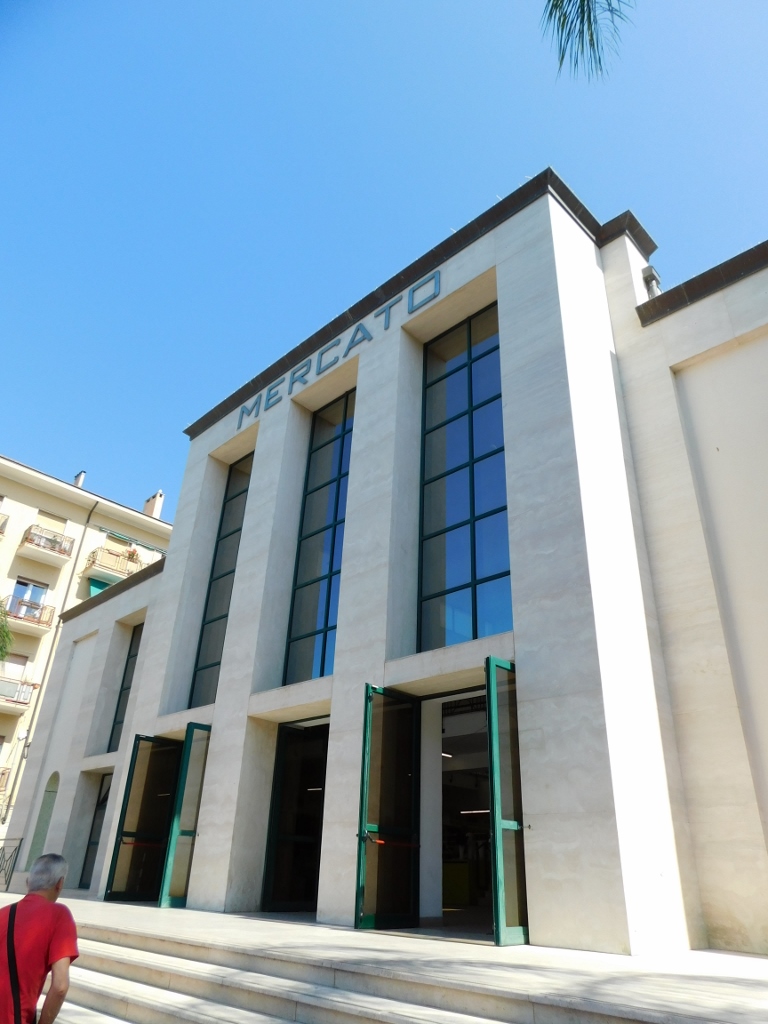 Bordighera, a detail
Bordighera, a detail
I generally like local markets and almost always make a point to visit them when I travel. That was the case here as well, where I took a short walk around, although I didn’t buy anything.
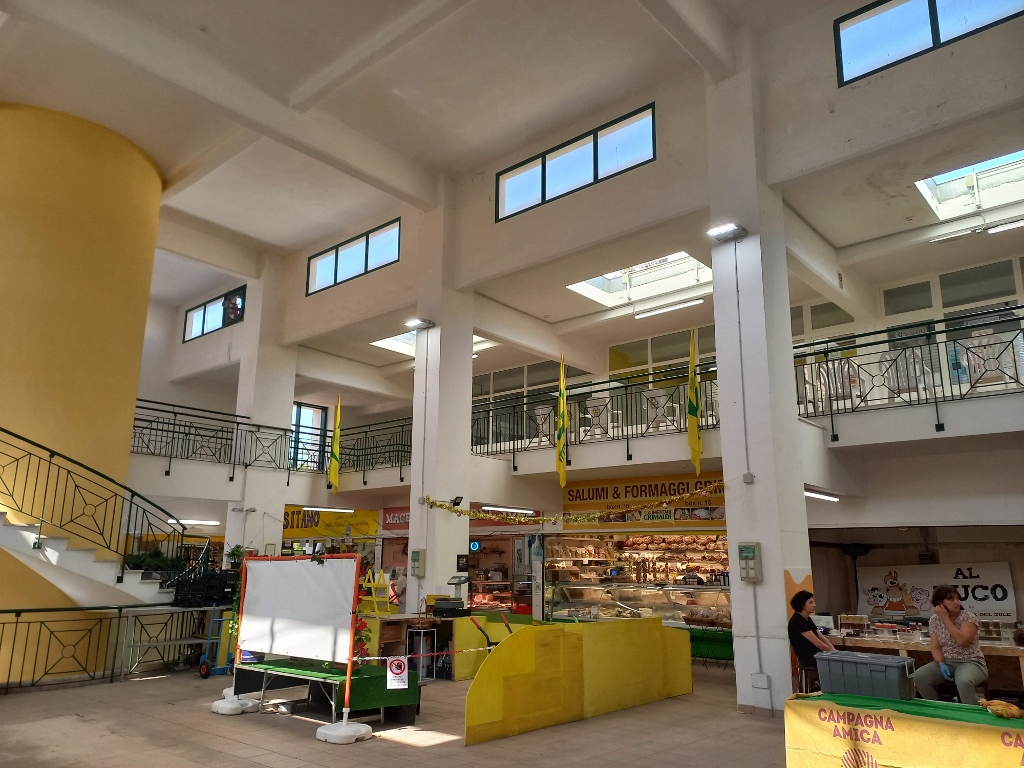 Bordighera, a detail
Bordighera, a detail
Then I found myself back on the streets of Bordighera and soon I arrived at the spacious promenade along the seafront.
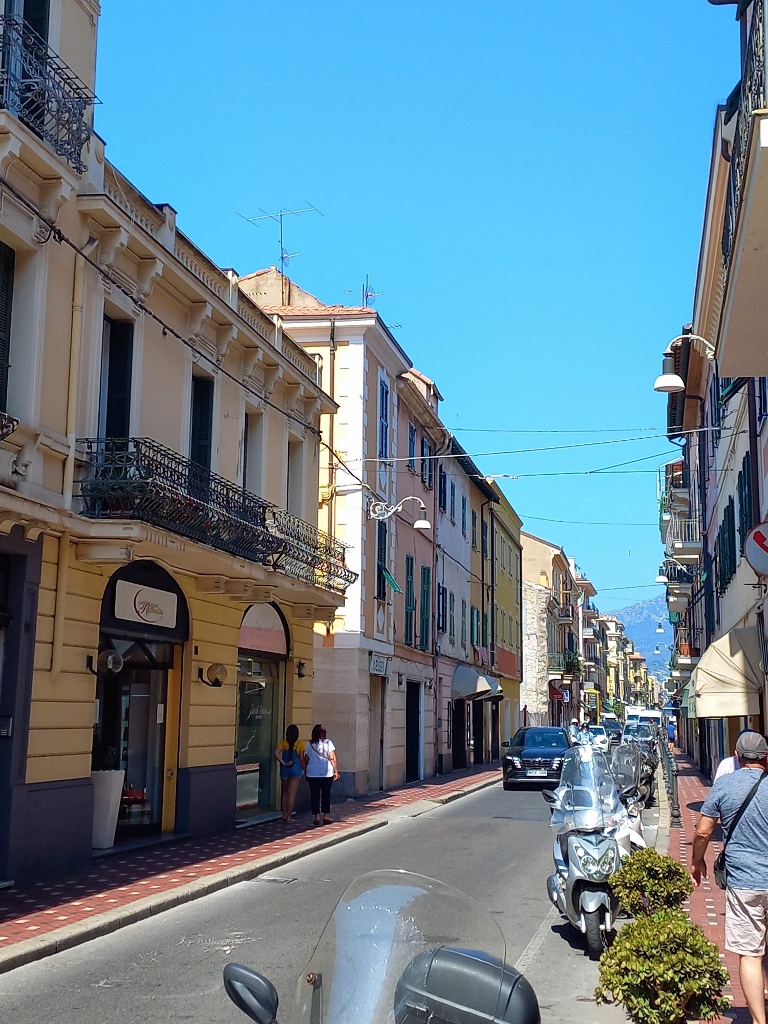 Bordighera, a detail
Bordighera, a detail
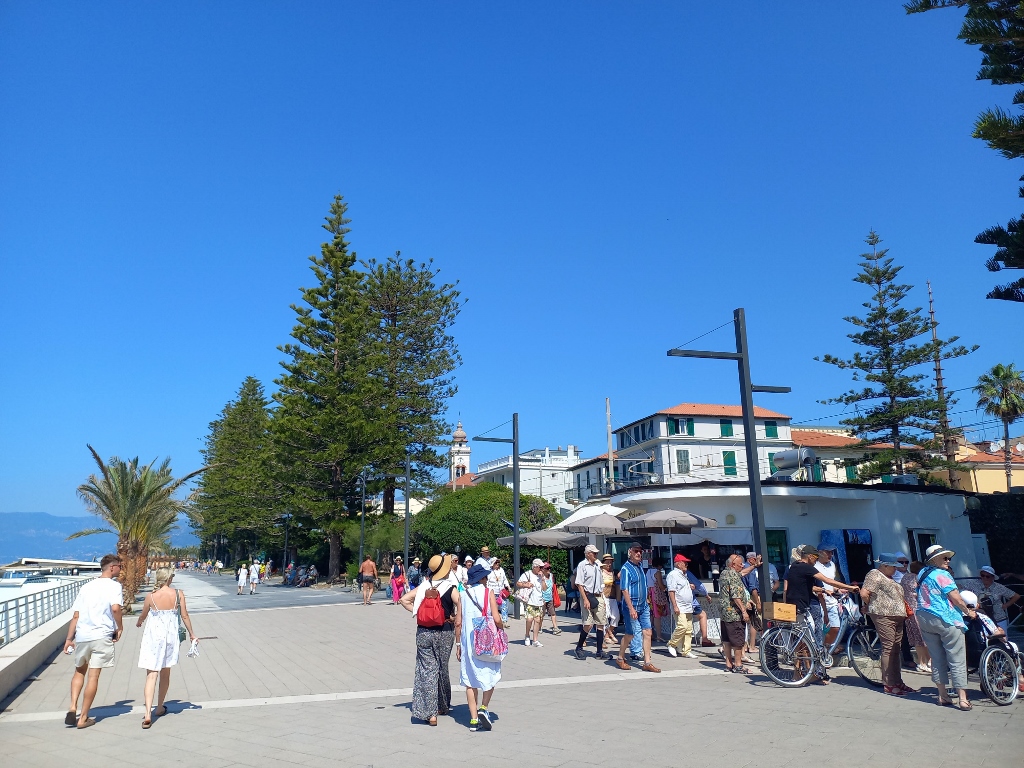 Bordighera, a detail
Bordighera, a detail
I walked a bit up and down for a short while, took a selfie, and then sat down in some nice shade by the beach and had a coffee.
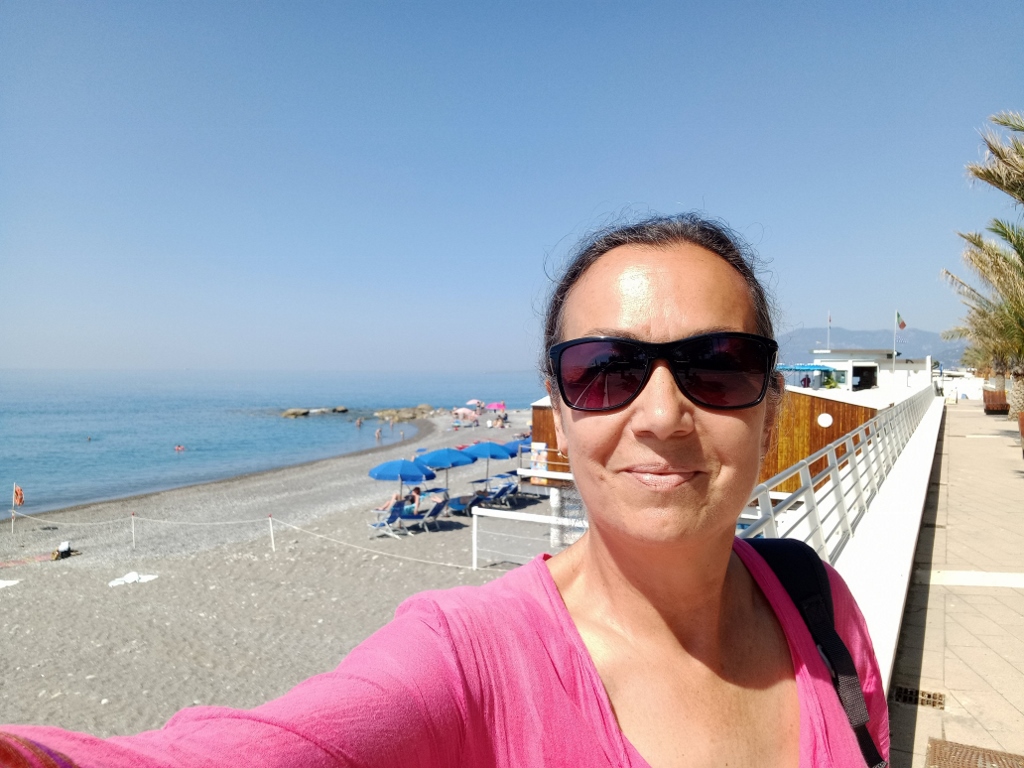 Selfie in Bordighera
Selfie in Bordighera
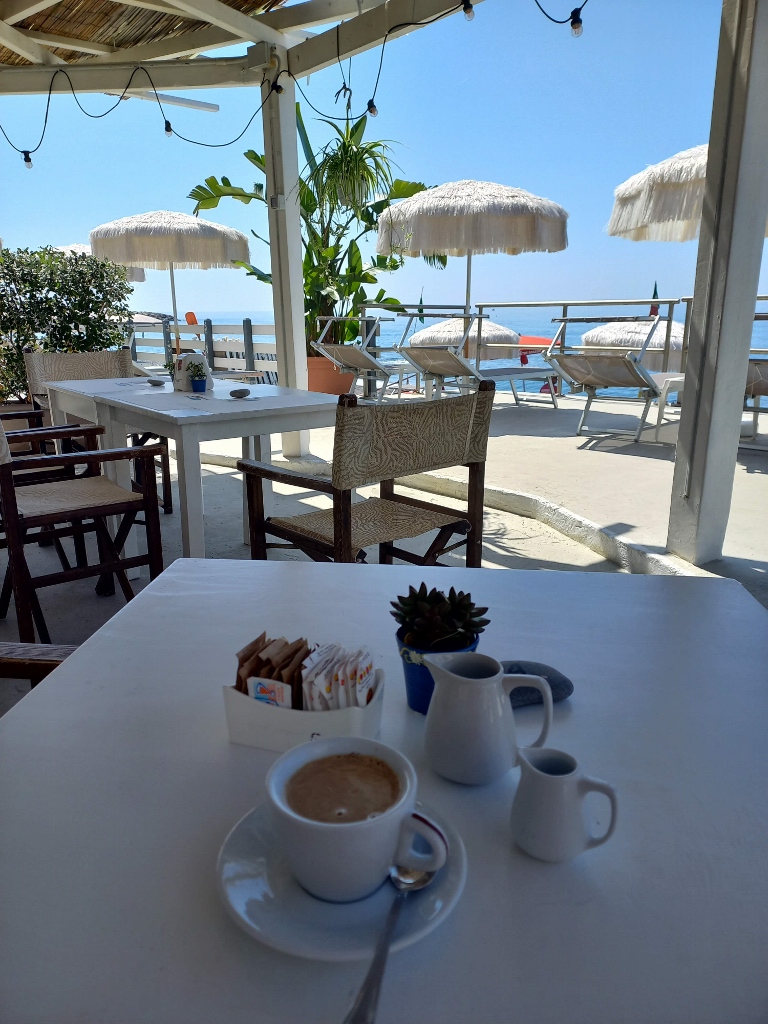 Bordighera, a detail
Bordighera, a detail
After a very pleasant break, I returned to the promenade and continued on, but I occasionally turned around to look back and capture what I was leaving behind.
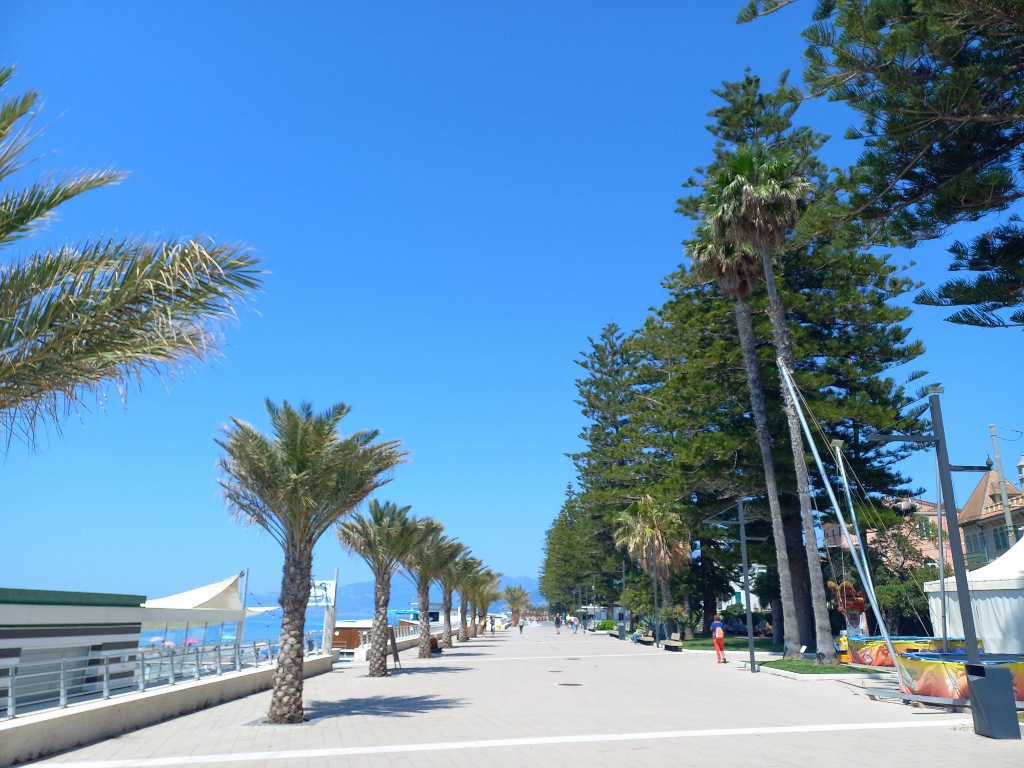 Bordighera, a detail
Bordighera, a detail
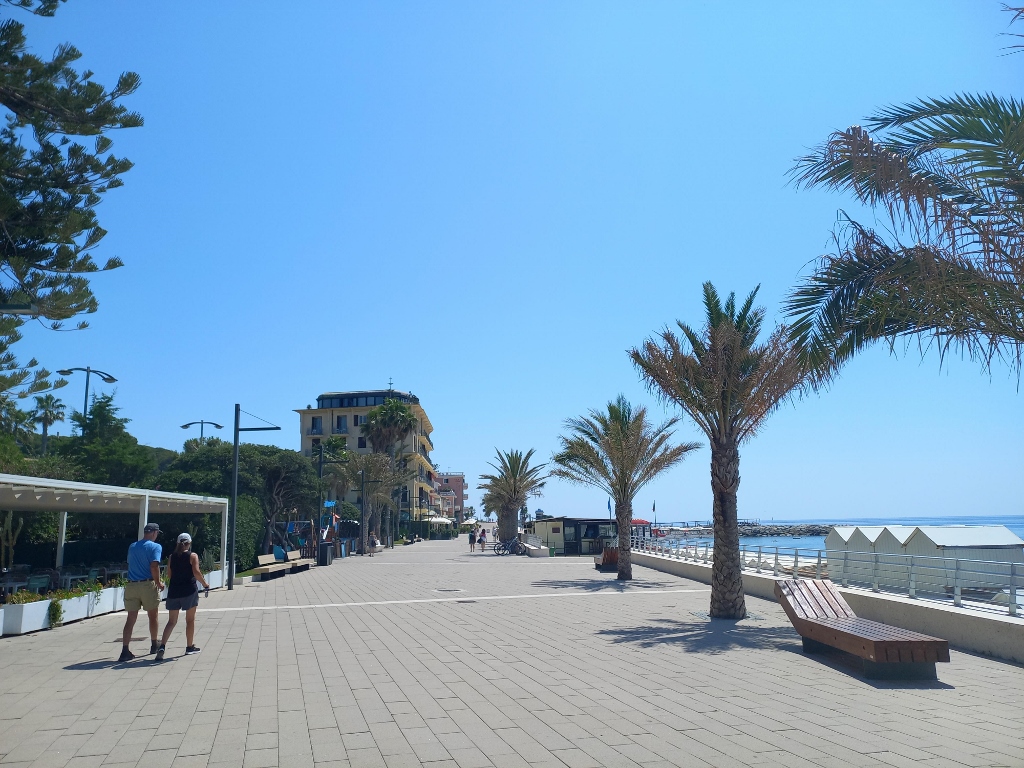 Bordighera, a detail
Bordighera, a detail
I also enjoyed taking photos of the public section of the beach, the one where staying is free of charge.
 Bordighera, a detail
Bordighera, a detail
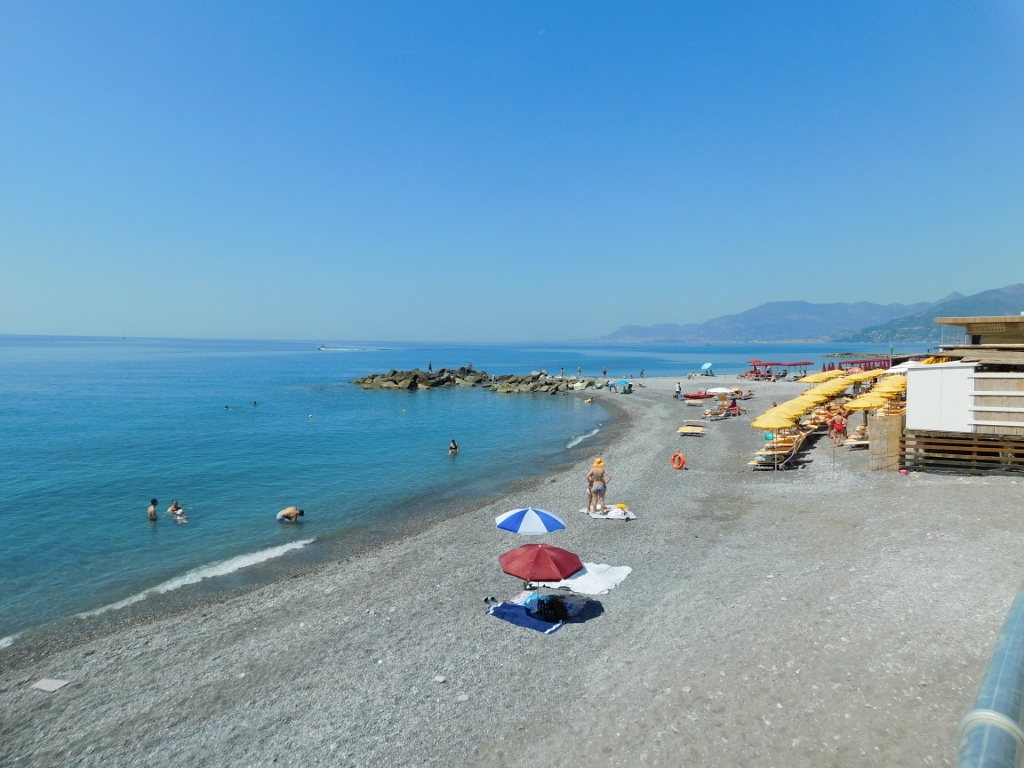 Bordighera, a detail
Bordighera, a detail
The coastline here was quite charming, and the water was very clear and clean. Part of me regretted not bringing a swimsuit, but honestly, swimming in the sea would have disrupted my sightseeing plans. You can’t do everything all the time.
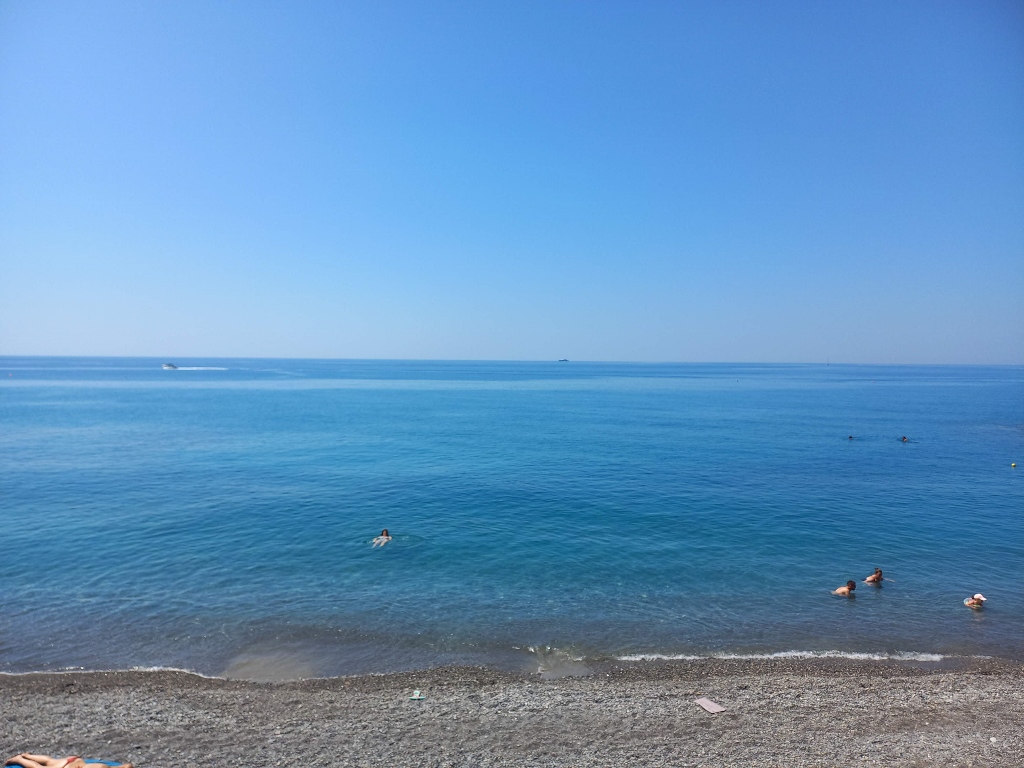 Bordighera, a detail
Bordighera, a detail
On the other side, you could see different parts of the town, while the railway line also runs there, with the station located very close to the shore. By the way, in order to get from the town to the beach, and vice versa, you have to use underground passages.
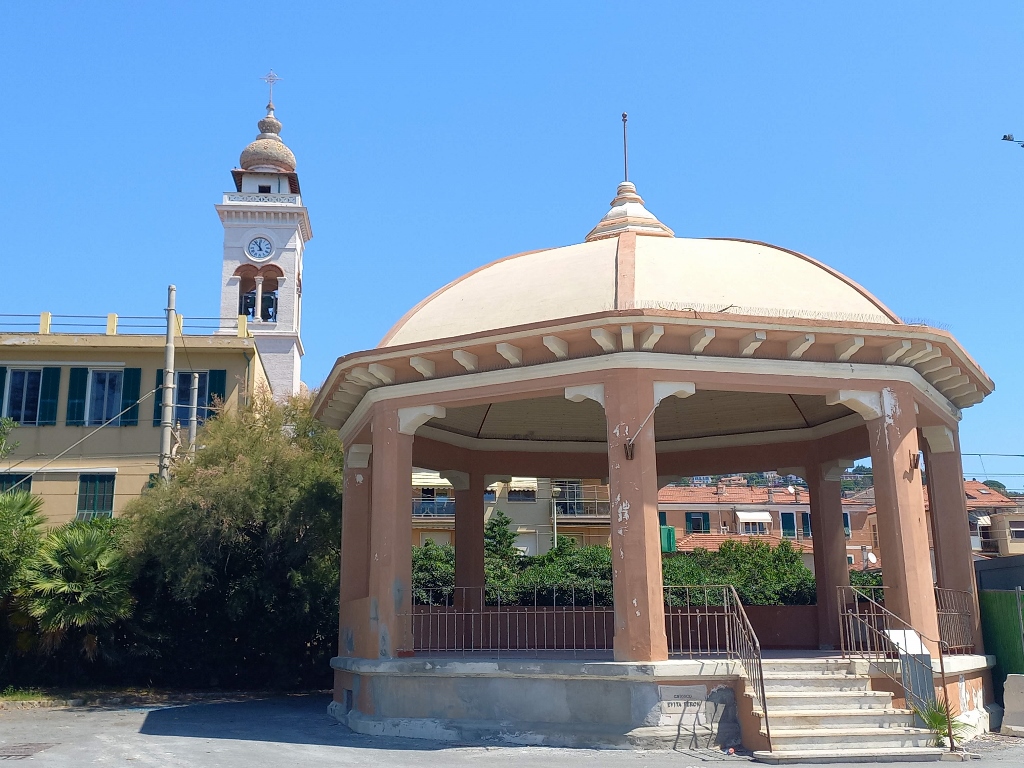 Bordighera, a detail
Bordighera, a detail
I also took a walk to the market that is held on certain days in almost all the towns along the Flower Riviera. That day, it was in Bordighera. Although I wasn’t interested in buying anything, I was curious and wanted to see how it was all organised. It was certainly colourful.
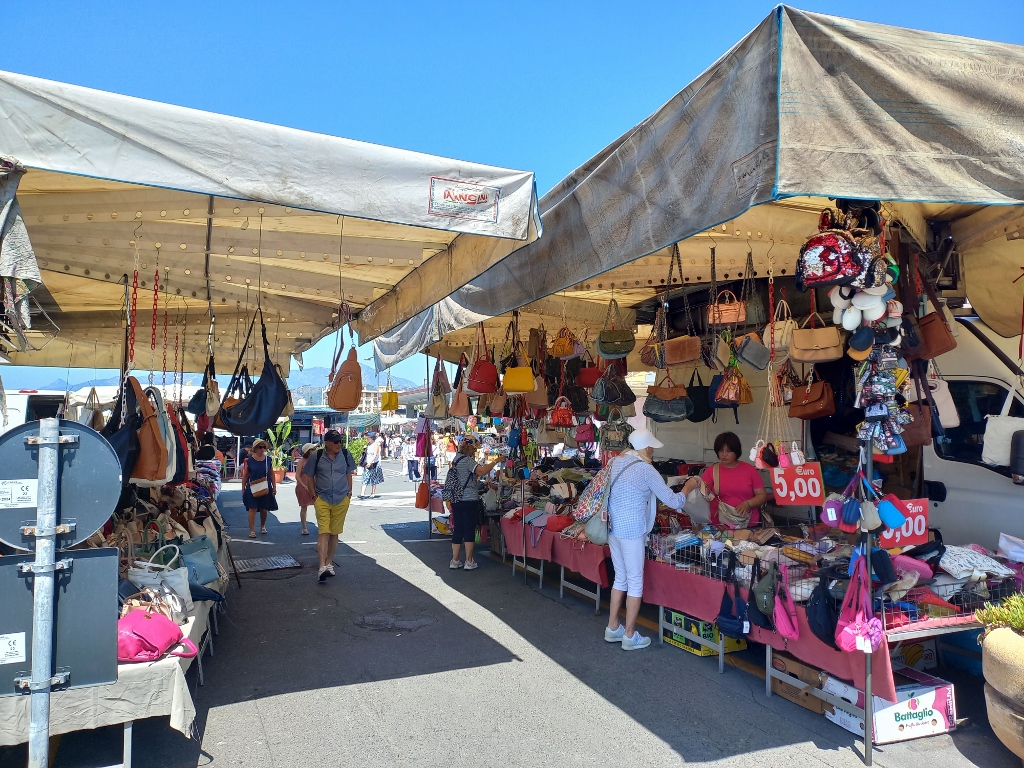 Bordighera, a detail
Bordighera, a detail
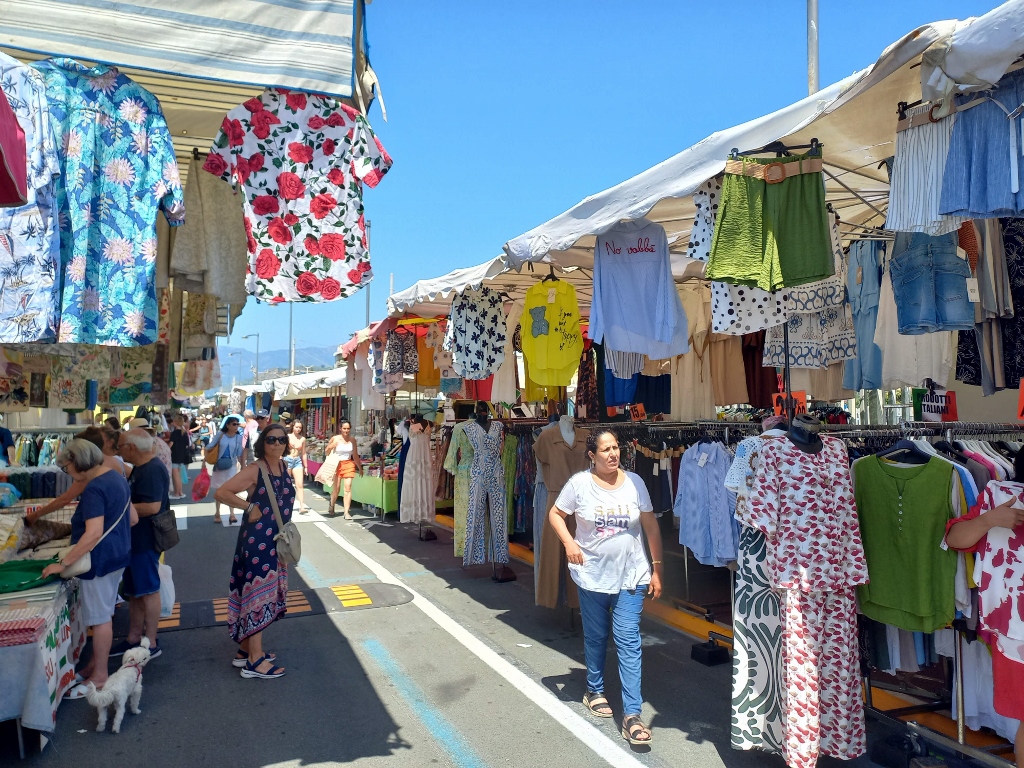 Bordighera, a detail
Bordighera, a detail
As it was already nearly noon and my plan was to visit Sanremo as well, it was time to start thinking about catching the bus. First, I reached the town streets by using the underground passage near the train station.
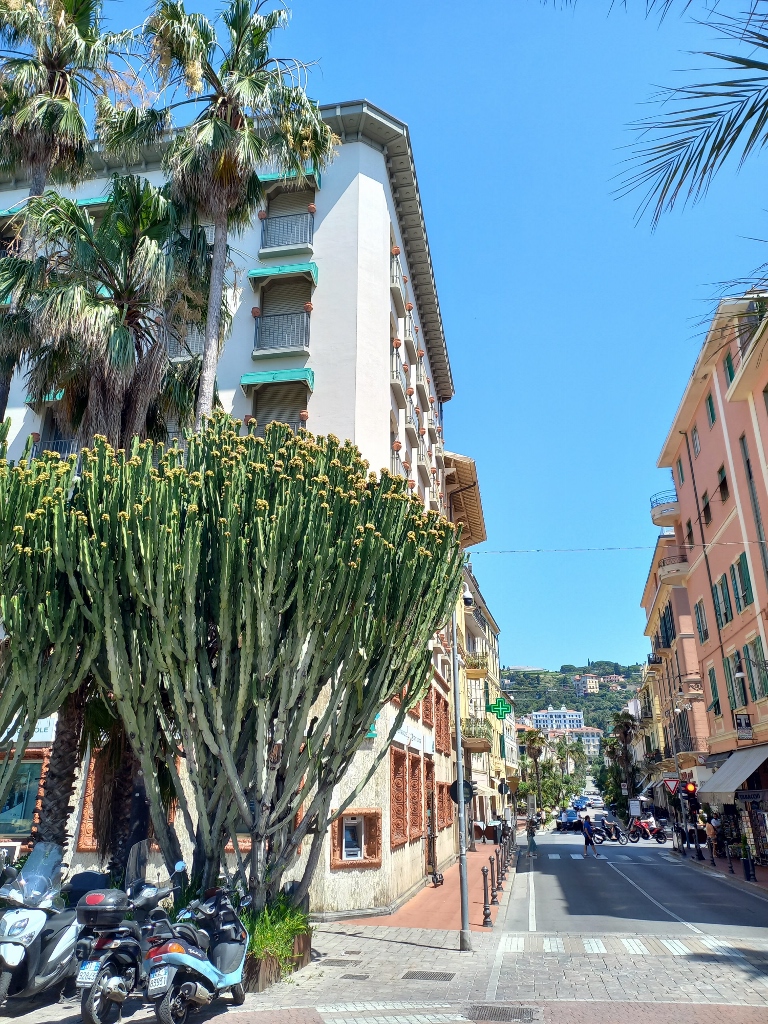 Bordighera, a detail
Bordighera, a detail
From there, I had a very nice view of the hillside area above Bordighera, where there are beautiful villas. Queen Margherita’s villa was also built on those hills with a view of the sea.
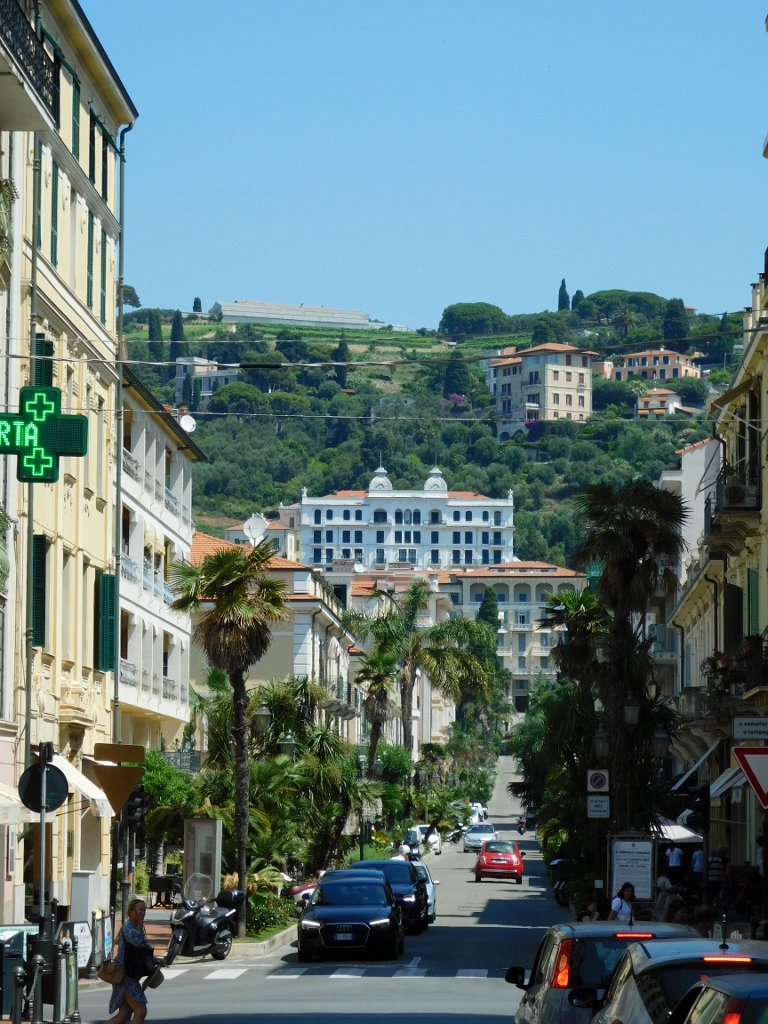 Bordighera, a detail
Bordighera, a detail
Then I headed towards an ice-cream parlour I had found recommended online and along the way I took some photos of details around the town.
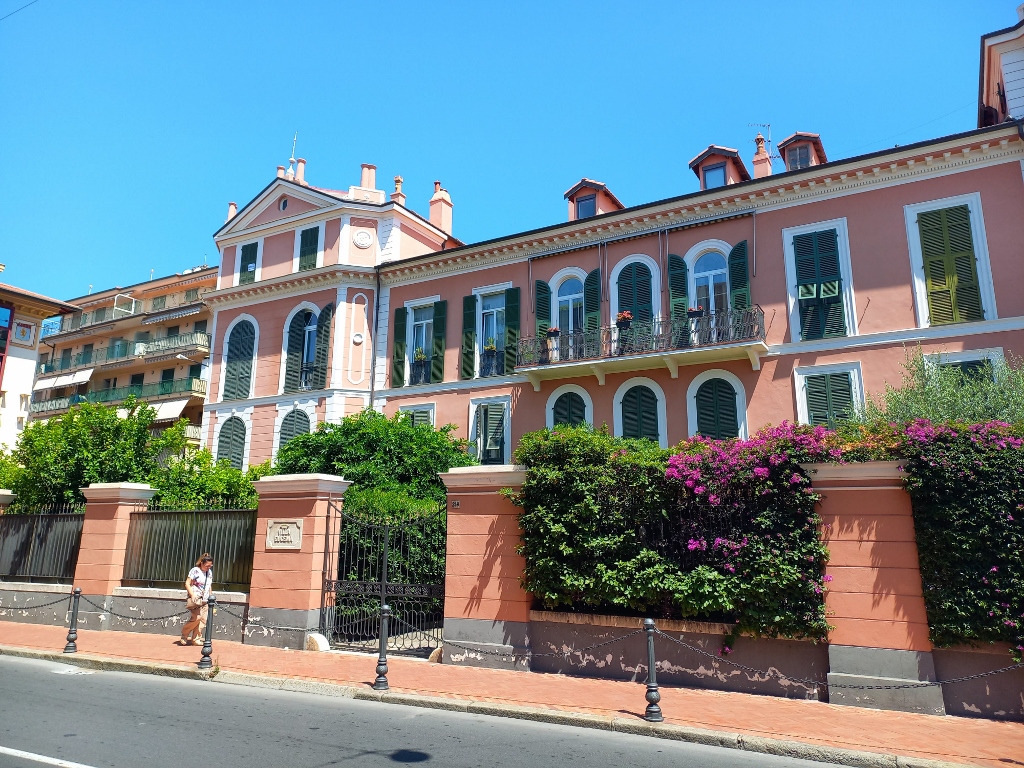 Bordighera, a detail
Bordighera, a detail
Eventually, I arrived at the ice-cream place and besides the excellent ice cream, it was also important that it was close to a bus stop where I soon caught my ride to Sanremo.
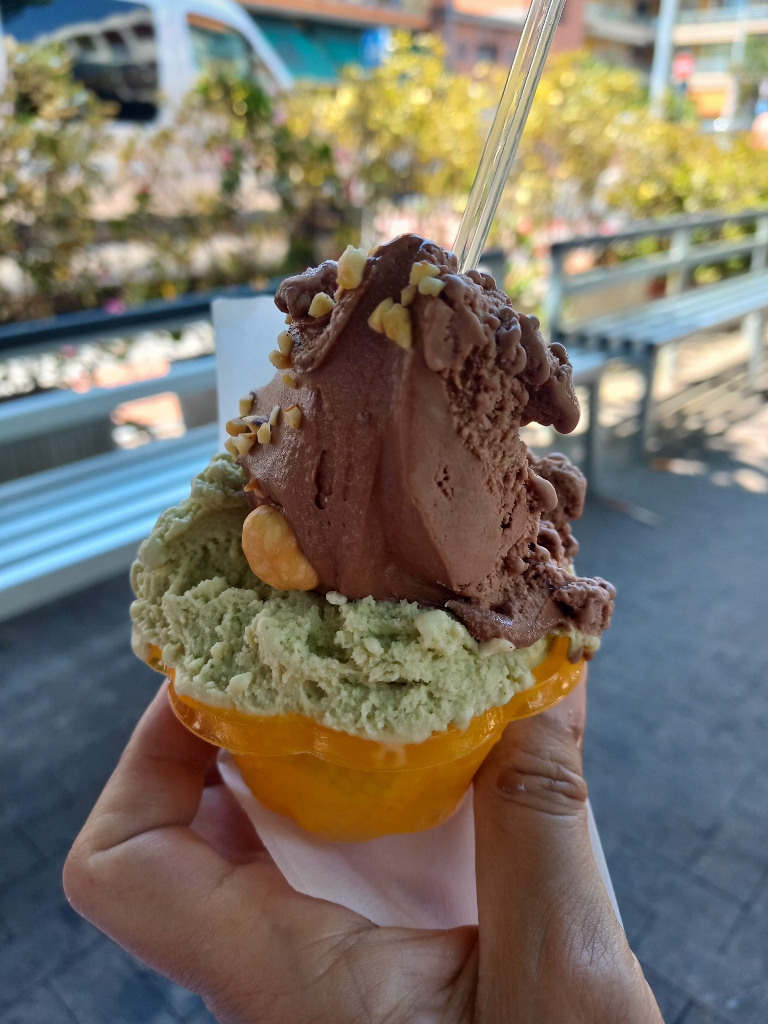 Bordighera, a detail
Bordighera, a detail
From the bus, I took photos of some details I noticed along the way. The first picture shows the area where I exited from Bordighera, while the second is a detail from the town of Ospedaletti.
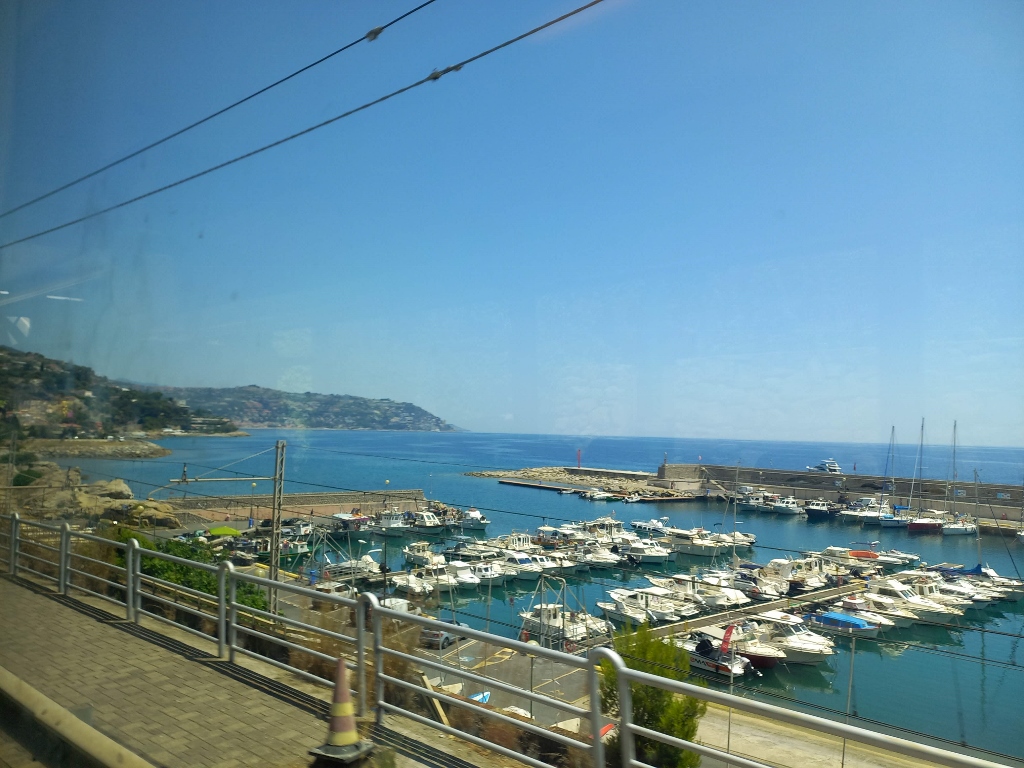 Bordighera, a detail
Bordighera, a detail
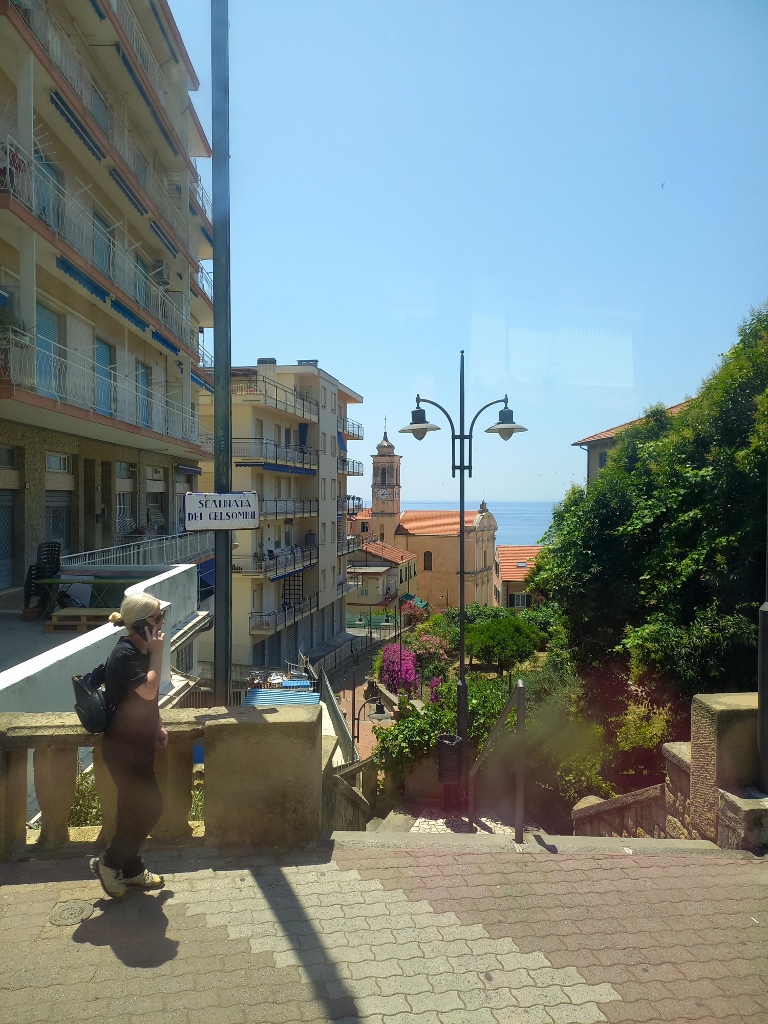 Ospedaletti, a detail
Ospedaletti, a detail
Soon, I arrived in Sanremo, which is the main city on the Riviera of Flowers, known for its mild climate and a large number of hours of sunshine. This also allows it, along with the rest of the Riviera, to be a well-known centre for flower cultivation. And you can see that at almost every step.
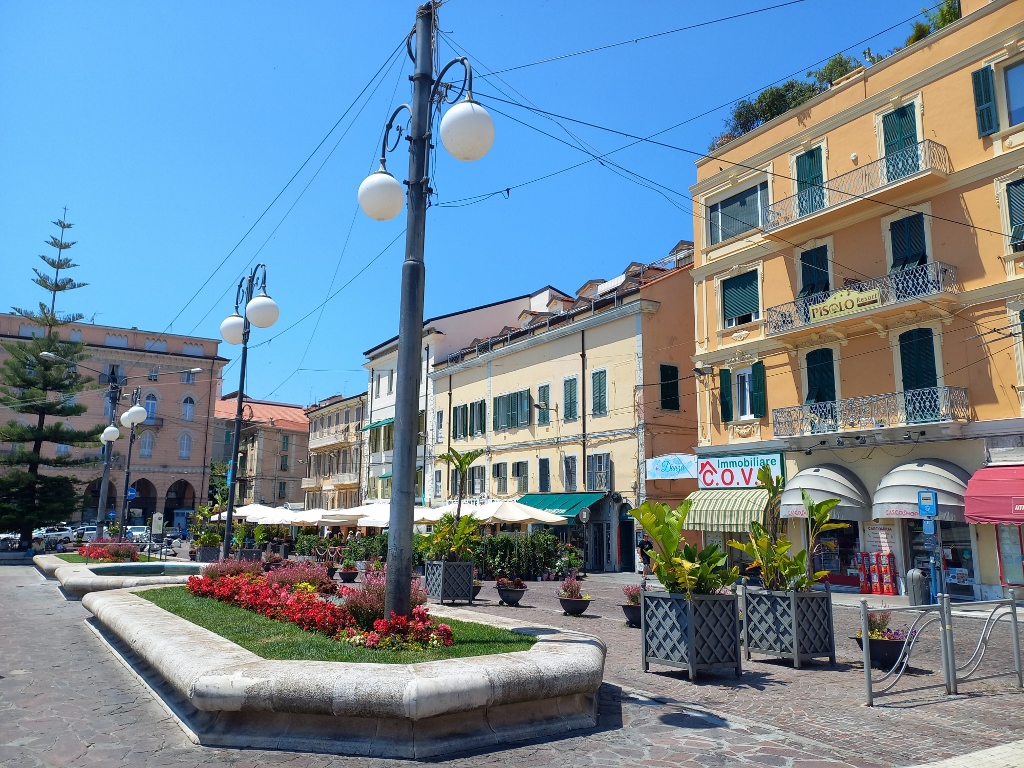 Sanremo, a detail
Sanremo, a detail
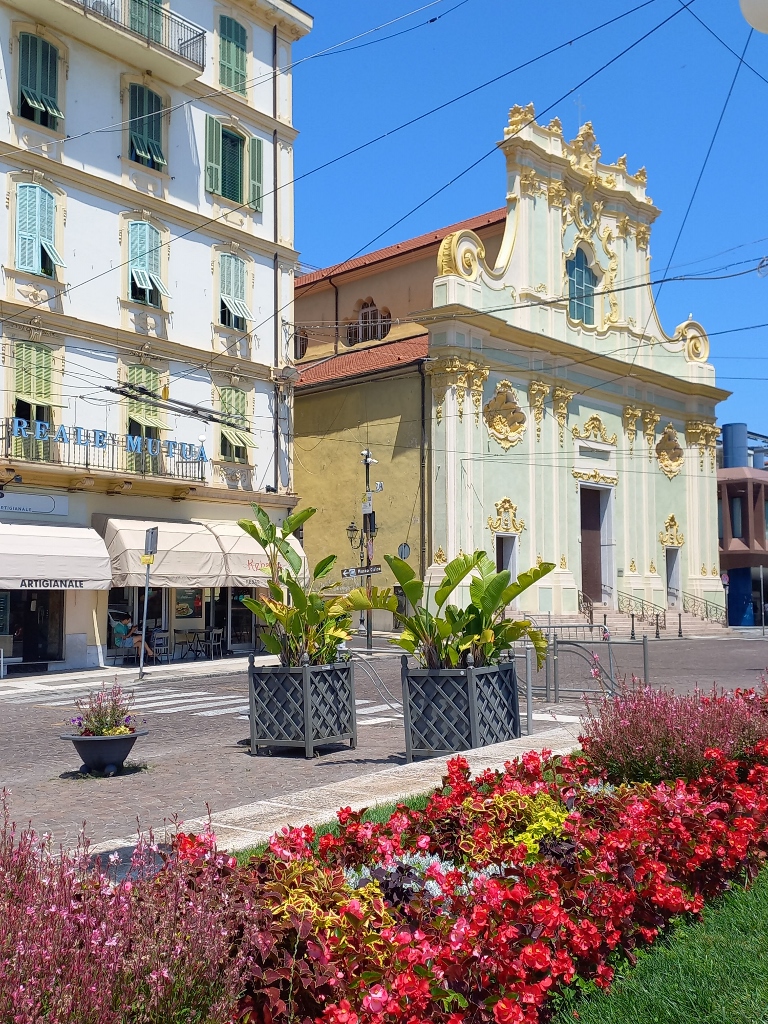 Sanremo, a detail
Sanremo, a detail
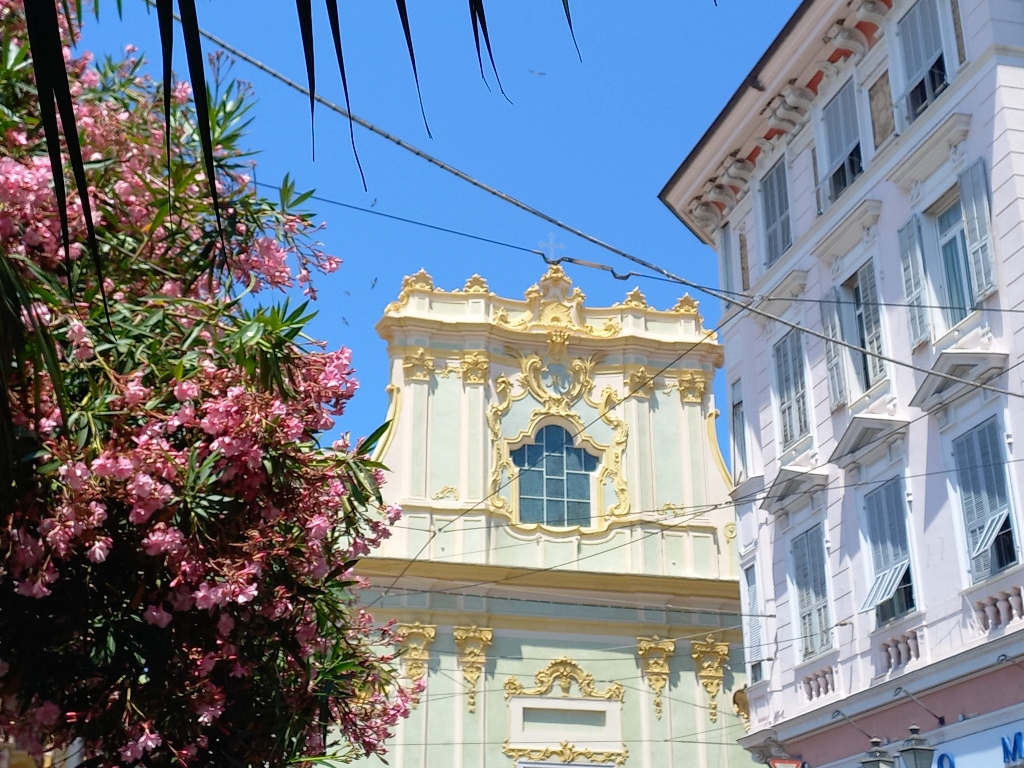 Sanremo, a detail
Sanremo, a detail
Sanremo is also famous for the renowned Italian music festival, the Sanremo Music Festival, which has been held annually in this city since 1951. This festival actually inspired the creation of the European competition – the Eurovision Song Contest. For nearly 50 years, the festival has been hosted at the Ariston Theatre, so I made my way to that venue as well.
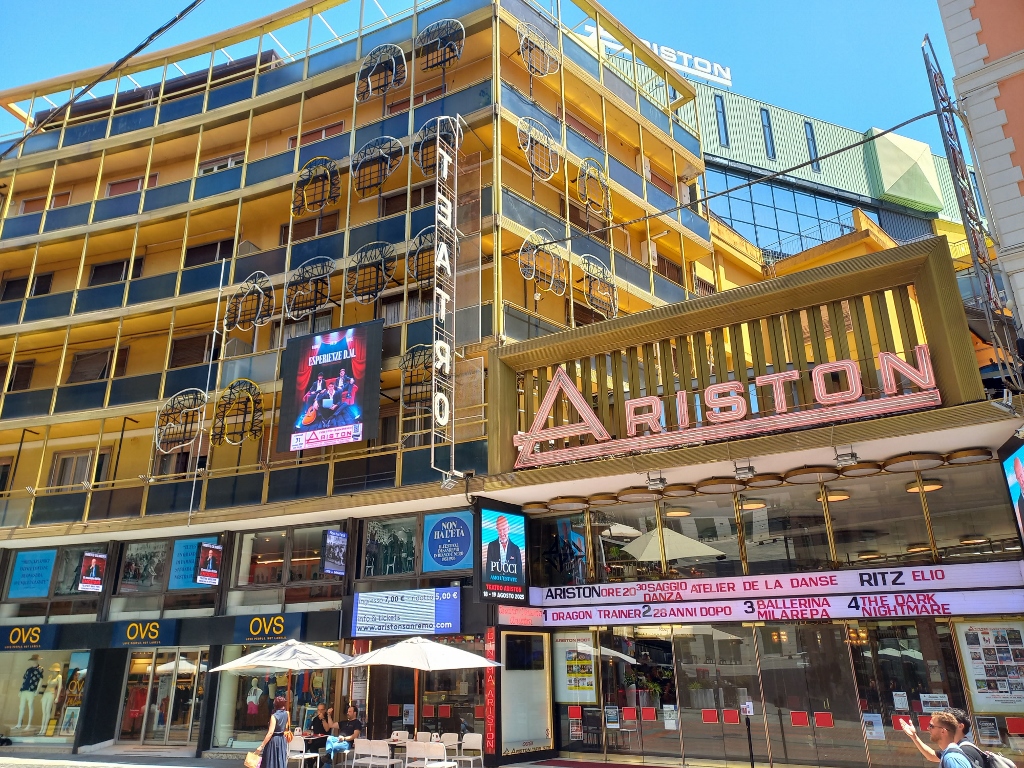 Sanremo, a detail
Sanremo, a detail
Then I continued my walk towards the Old Town – Città Vecchia.
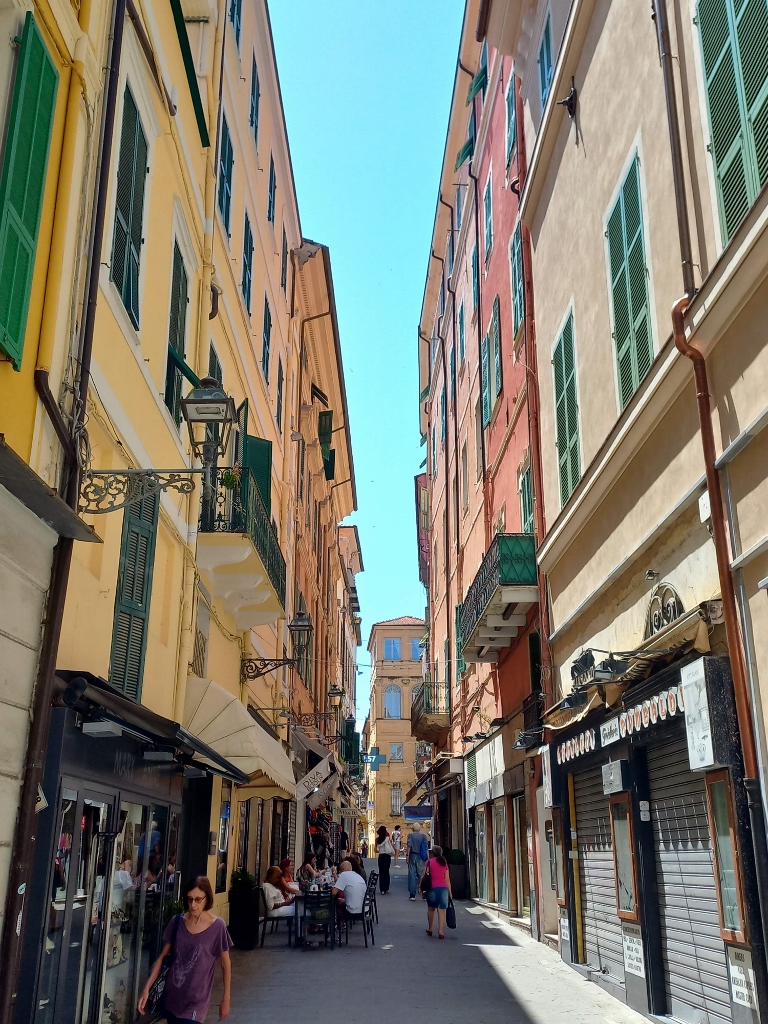 Sanremo, a detail
Sanremo, a detail
The medieval Old Town is a true labyrinth of narrow streets covering the steep hillside above the more modern, flat parts of the city along the coast.
I entered the old part of the town called Pigna through St. Stephen’s Gate. There, you can also see a tower that was once part of the gate, although today the area is clearly residential.
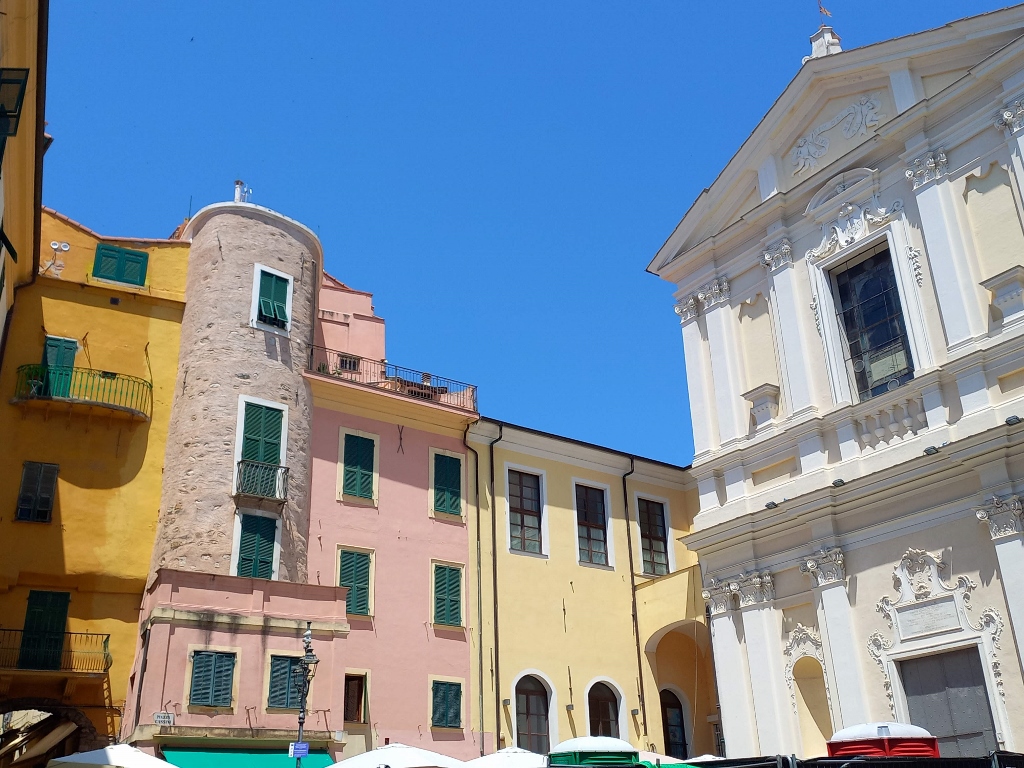 Sanremo, a detail
Sanremo, a detail
Upon entering the Old Town, there are several directions a visitor can take, while I decided to go to the right. Apart from a few especially interesting spots and details, usually marked with information signs, everything else is quite similar, but very picturesque.
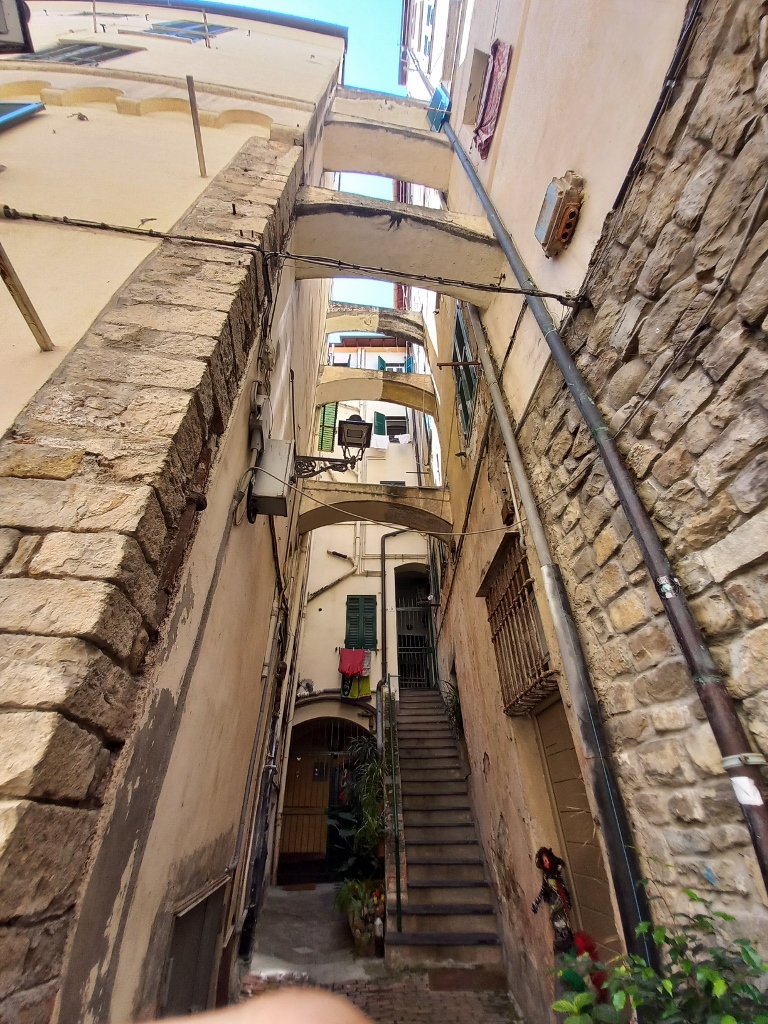 Sanremo, a detail
Sanremo, a detail
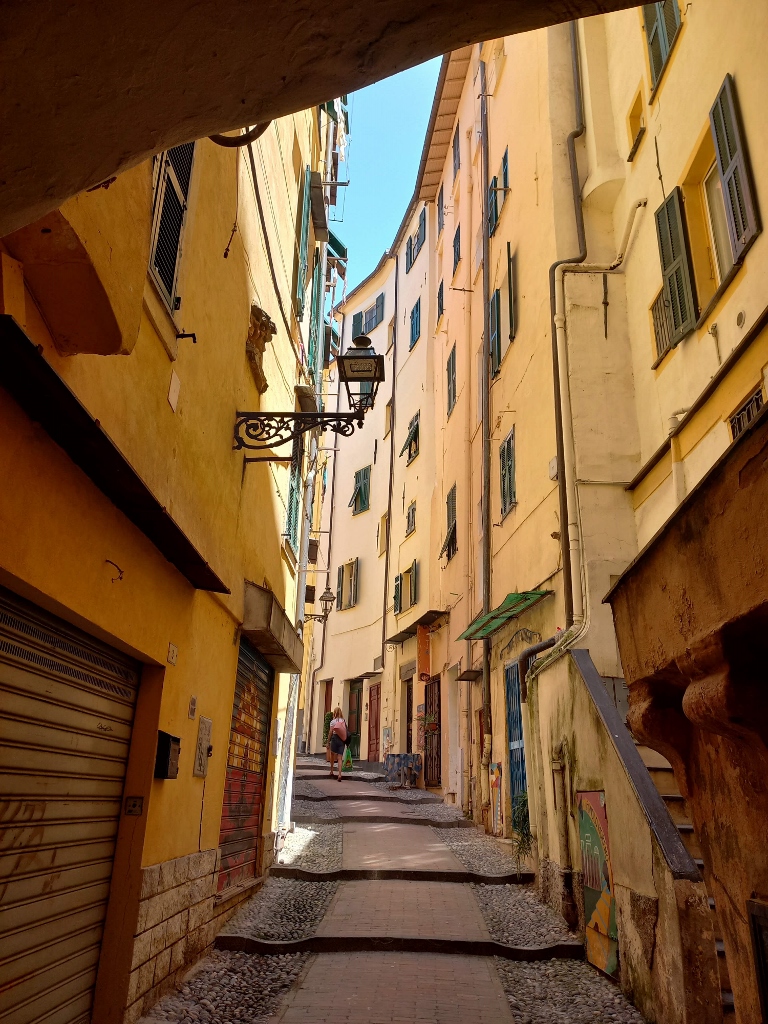 Sanremo, a detail
Sanremo, a detail
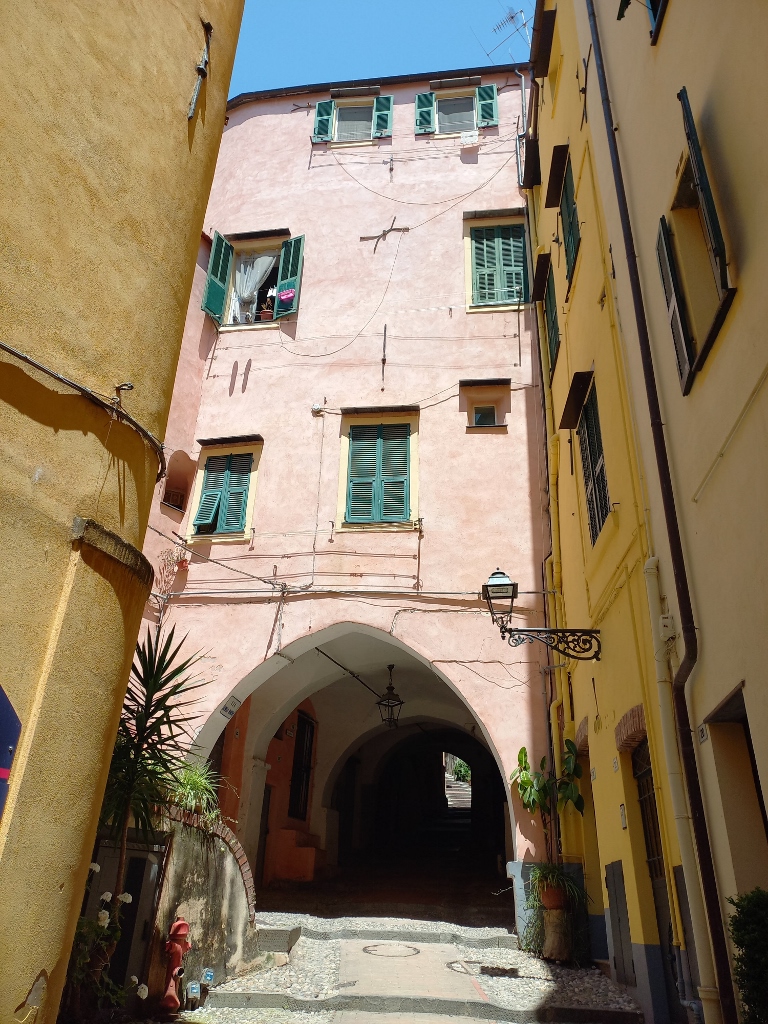 Sanremo, a detail
Sanremo, a detail
Along the way, I also spotted and took a photo of a barn swallow (Hirundo rustica).
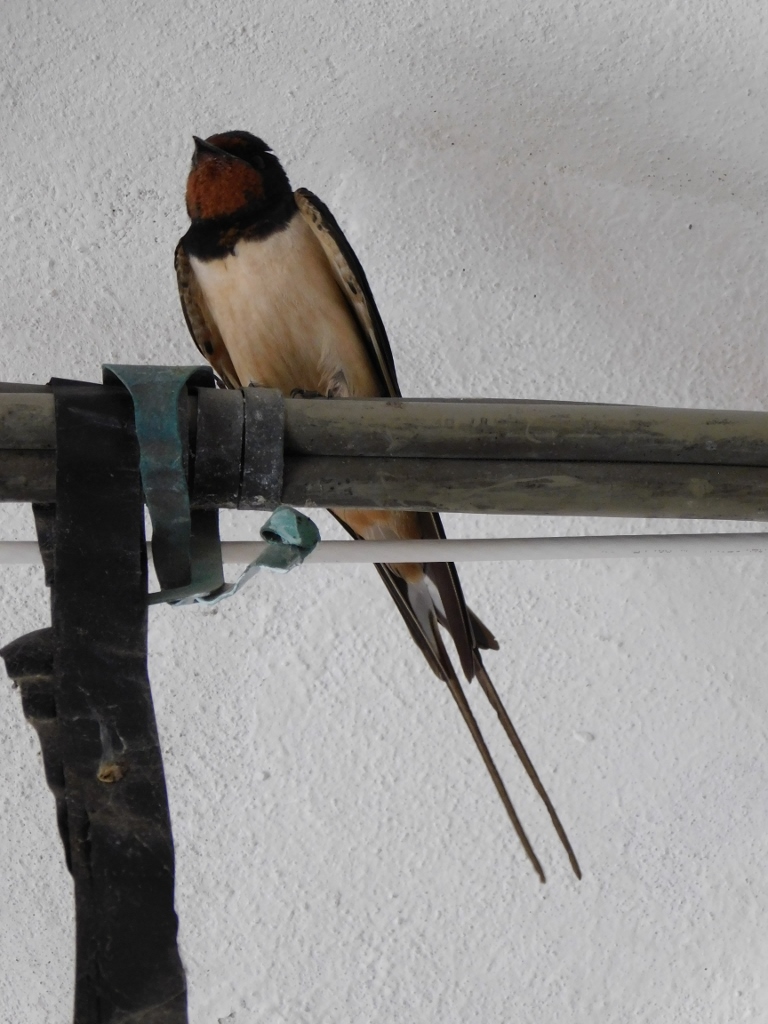 Barn swallow
Barn swallow
Still, the core of my interests within the Old Town in Sanremo were the picturesque streets and passageways.
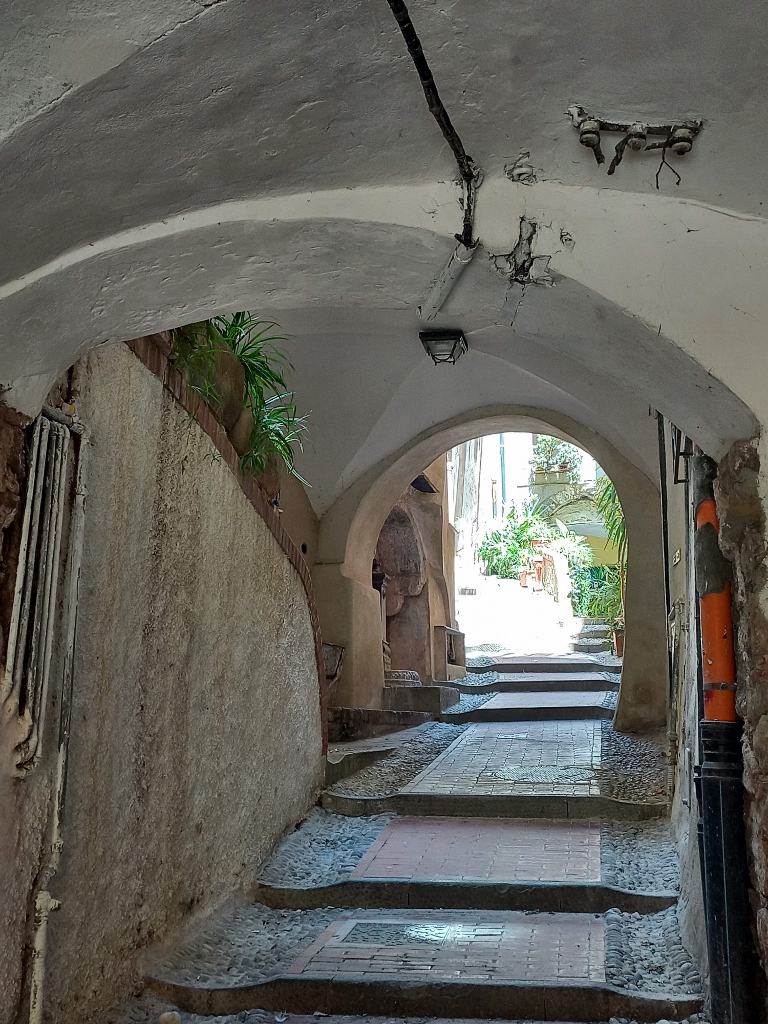 Sanremo, a detail
Sanremo, a detail
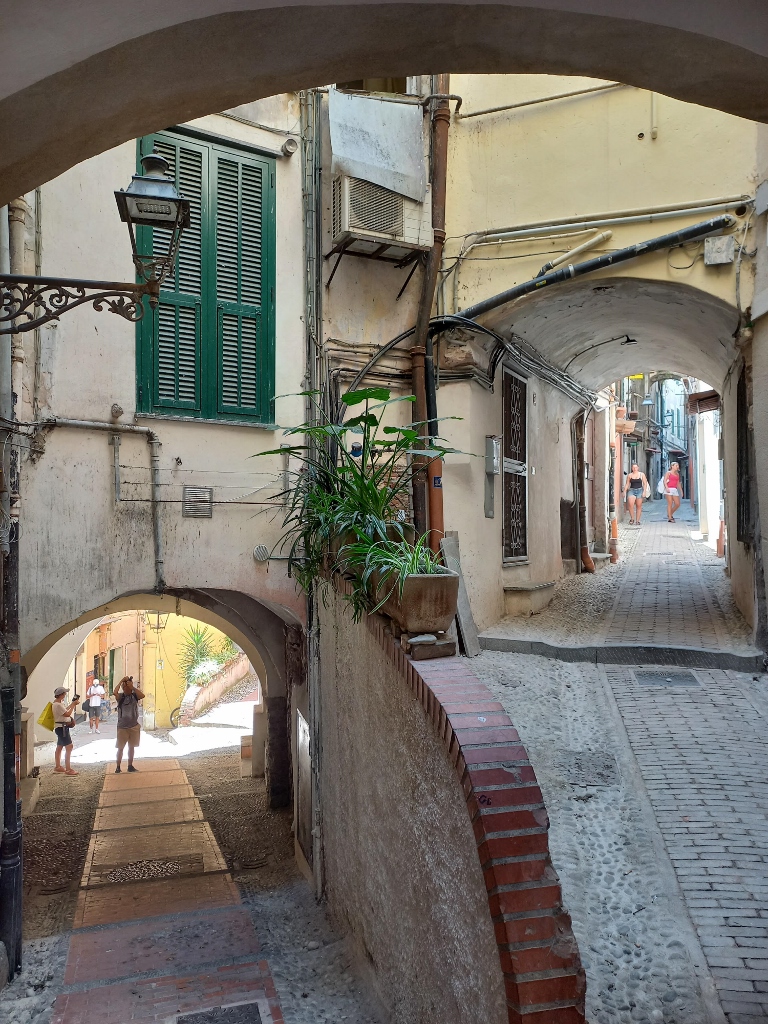 Sanremo, a detail
Sanremo, a detail
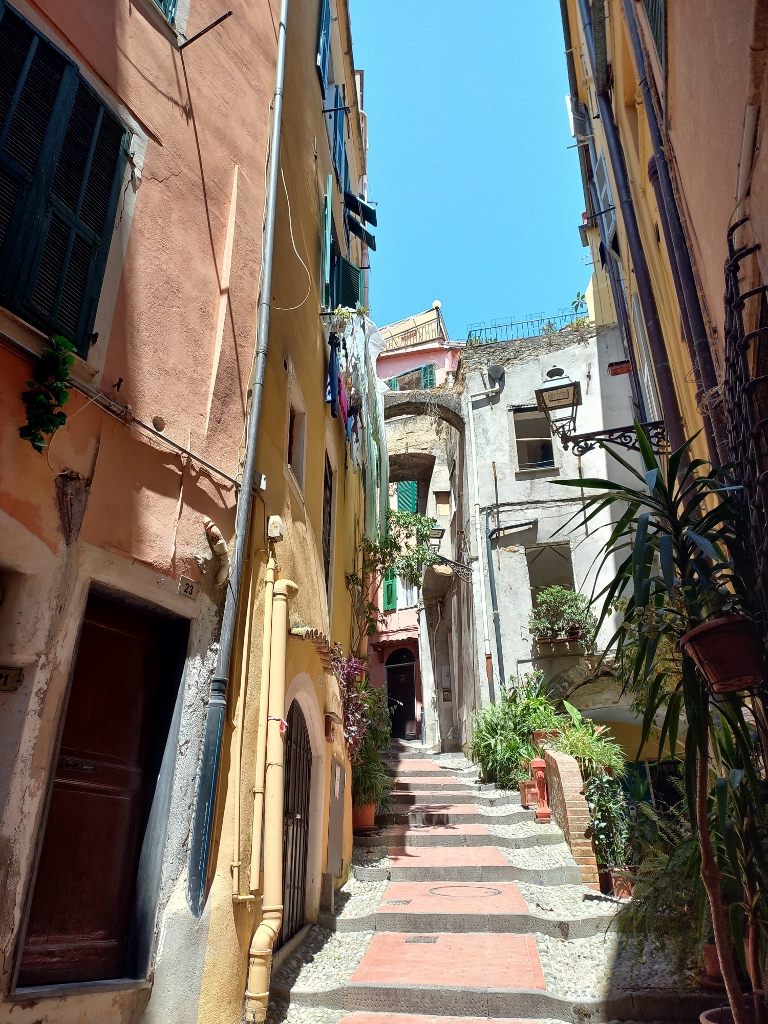 Sanremo, a detail
Sanremo, a detail
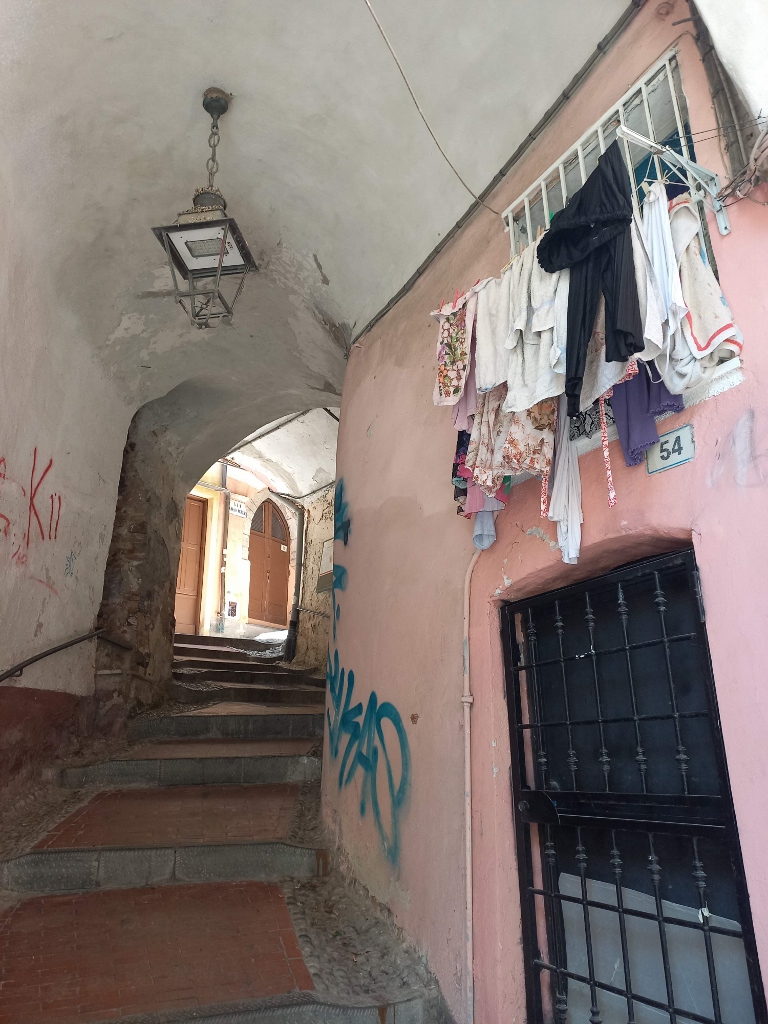 Sanremo, a detail
Sanremo, a detail
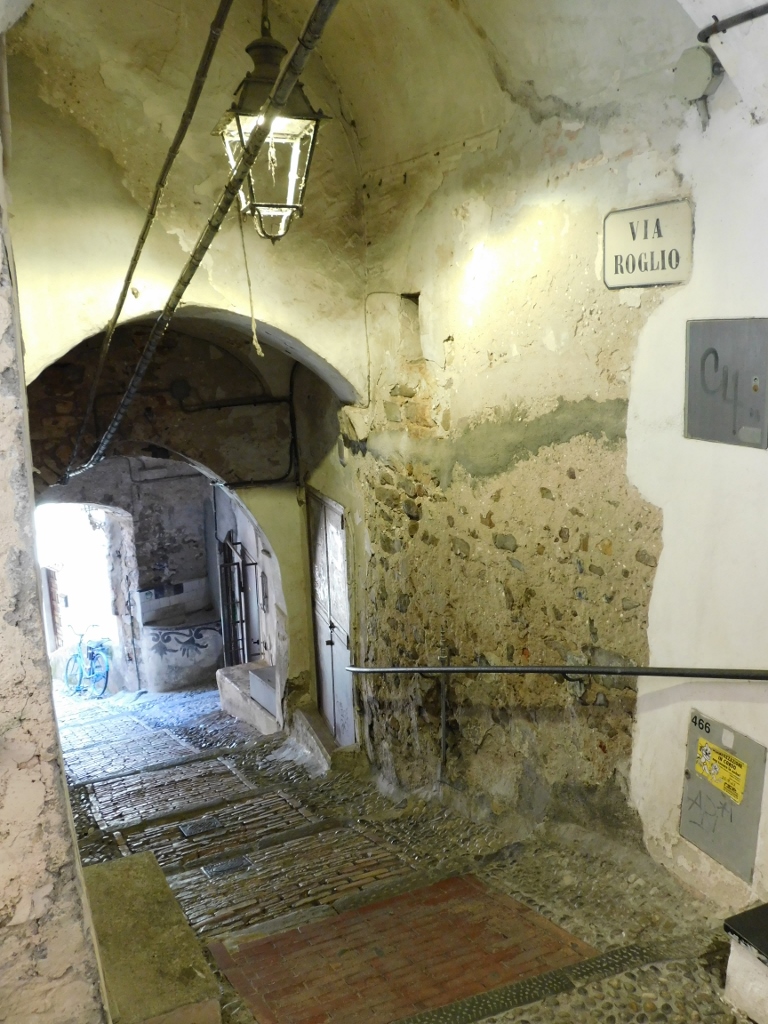 Sanremo, a detail
Sanremo, a detail
At one point, I climbed almost to the top of the hill, where from a plateau I had an excellent view of the newer parts of the city and the sea.
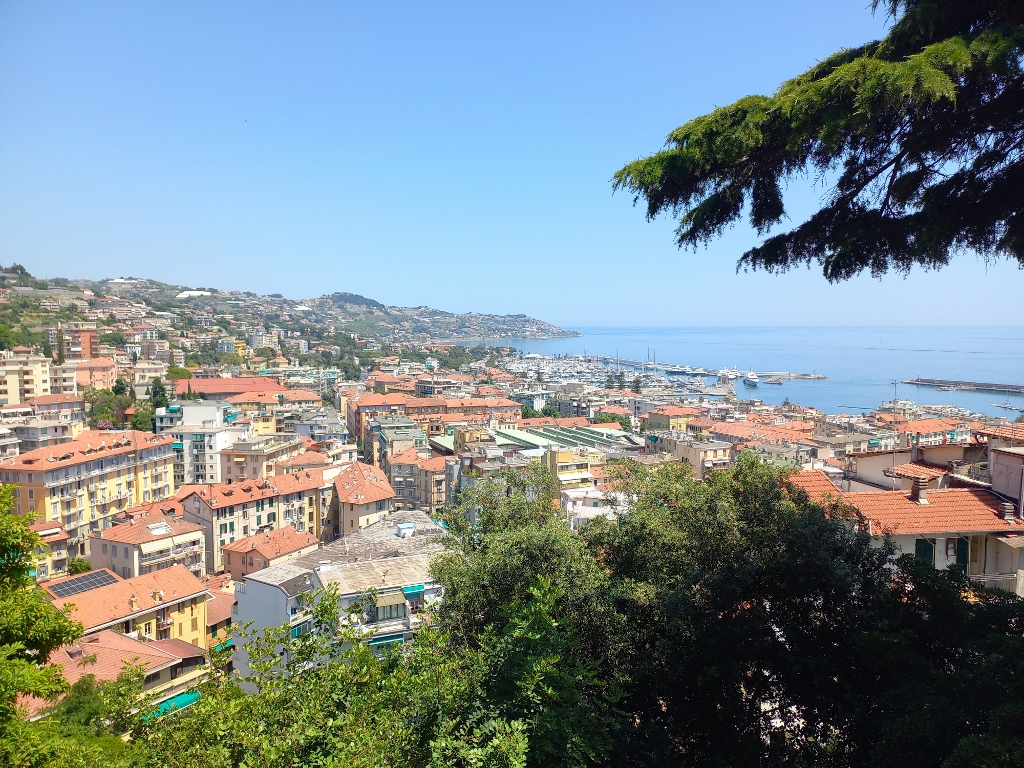 Sanremo
Sanremo
Above is also Queen Elena Park, or Giardini Regina Elena, but it was being renovated during my visit, so I couldn’t enter – only take pictures through the fence in order to show what it looked like.
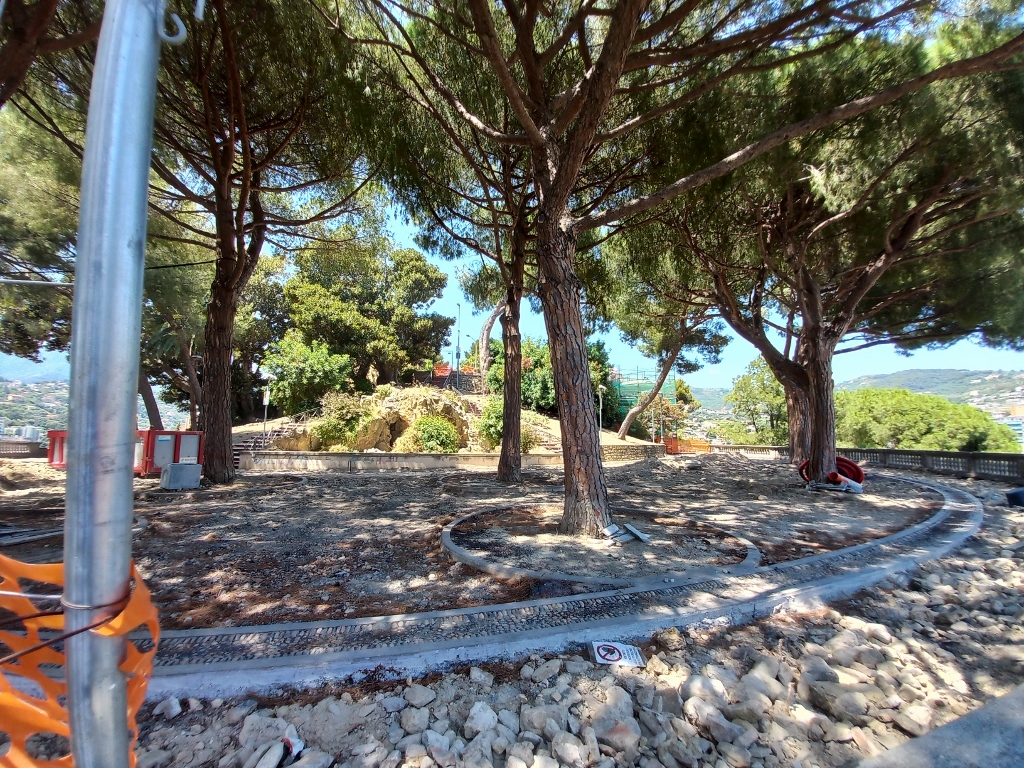 Sanremo, a detail
Sanremo, a detail
I’ll explain a bit later which queen this refers to, but for now, I took a panoramic photo and then started descending by a different path than the one I had climbed.
 Sanremo, a detail
Sanremo, a detail
Along the way, I also passed by an impressive fig tree – a species that in Serbia is usually grown only as a houseplant. Although, there is one special fig tree in the town of Čačak, Serbia, that is protected by the state as a “nature monument” (see: https://www.svudapodji.com/en/cacak-ovcarbanja-1/).
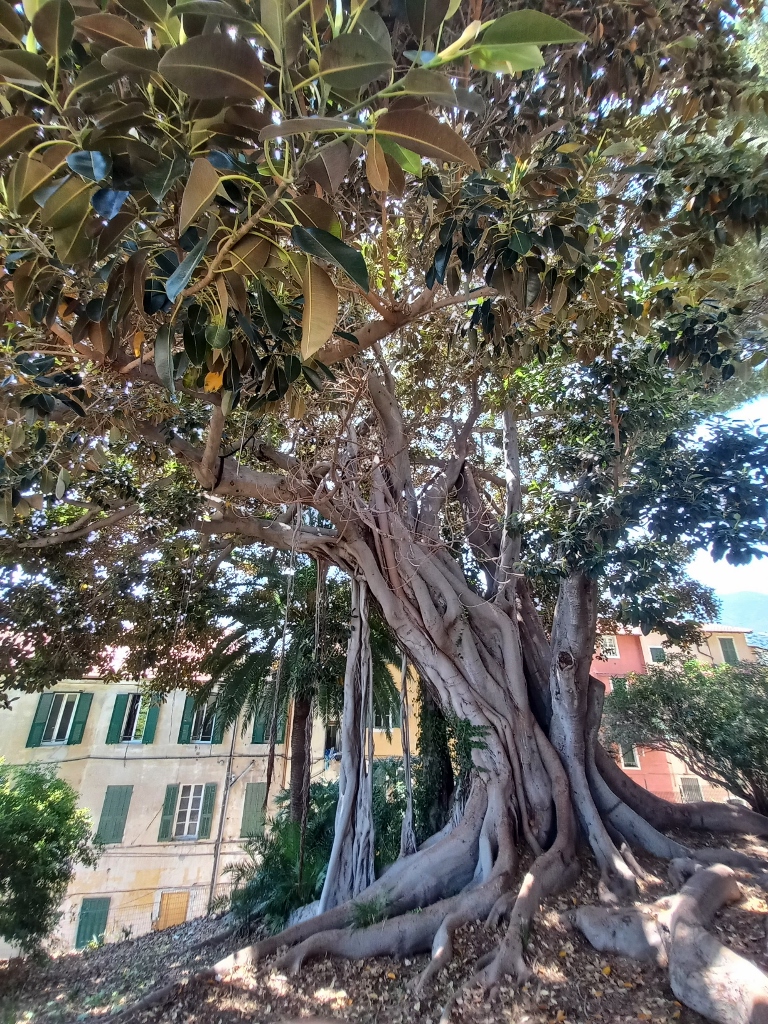 Sanremo, a detail
Sanremo, a detail
So, I began to descend and then I took a break in a square.
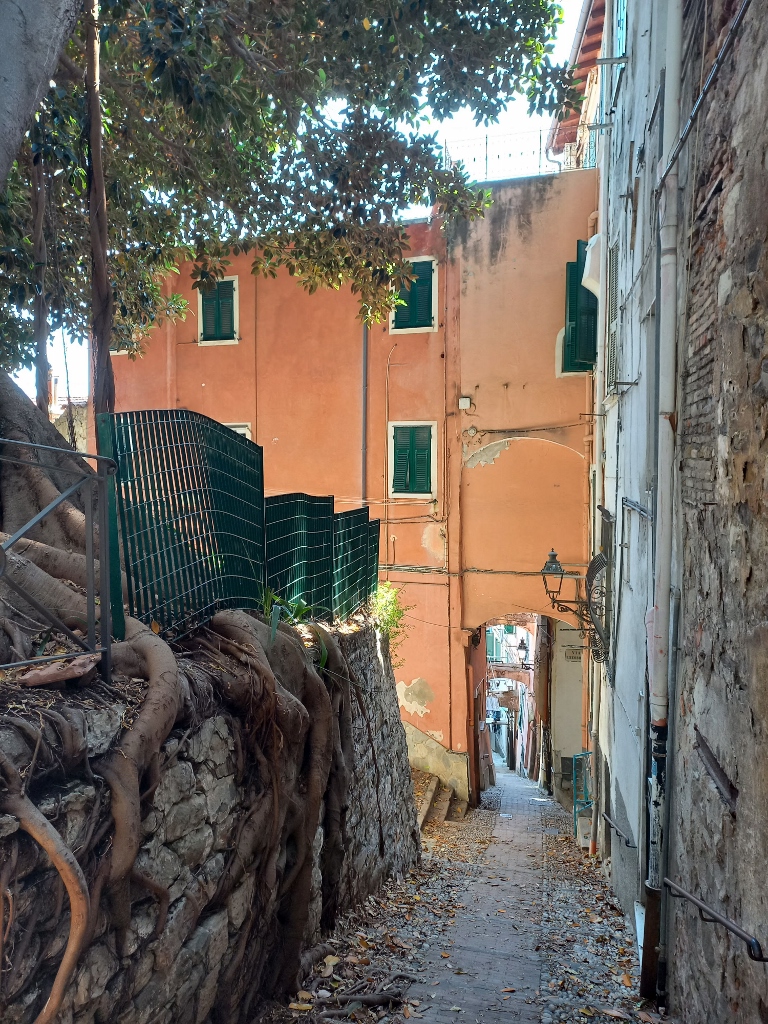 Sanremo, a detail
Sanremo, a detail
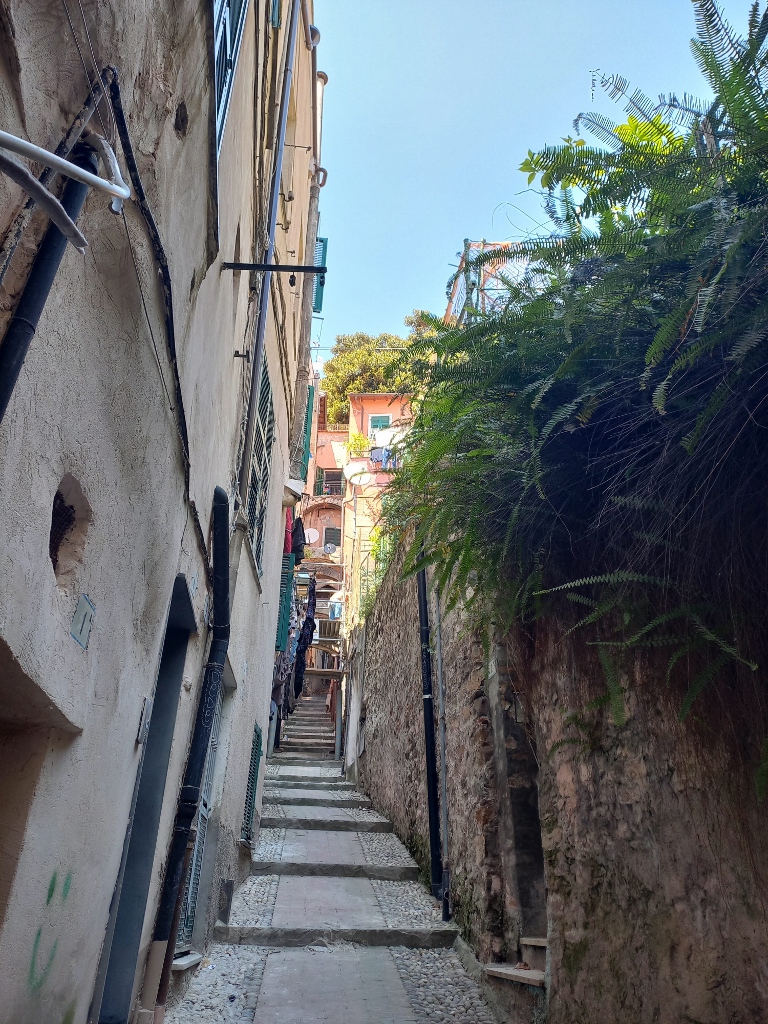 Sanremo, a detail
Sanremo, a detail
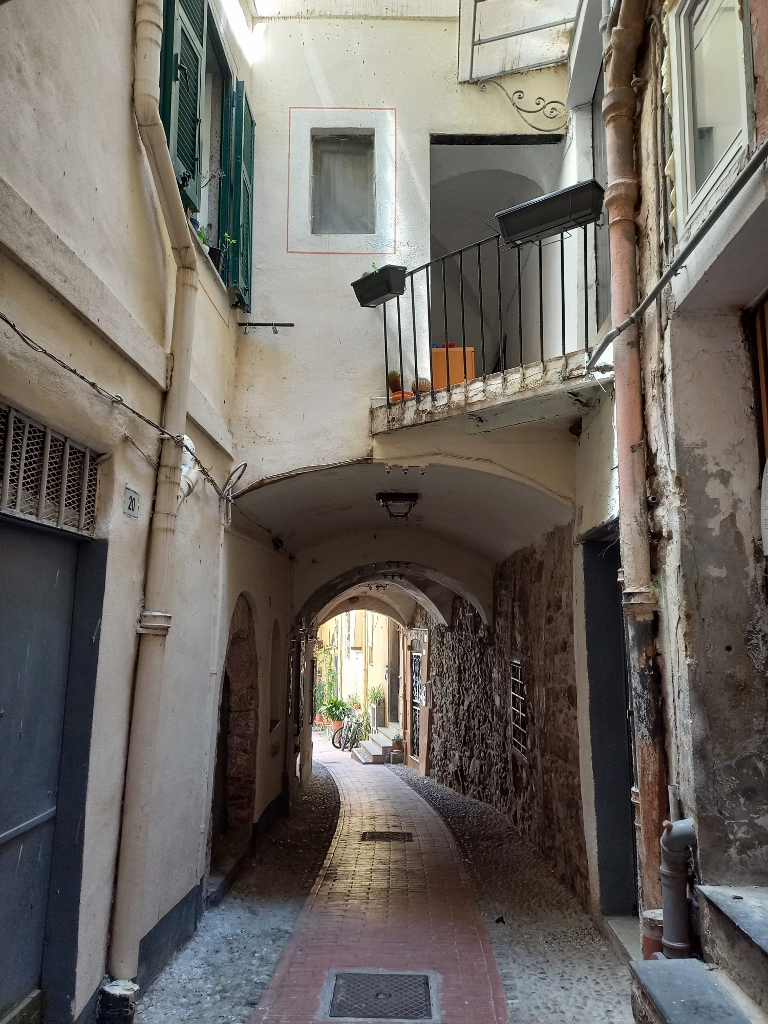 Sanremo, a detail
Sanremo, a detail
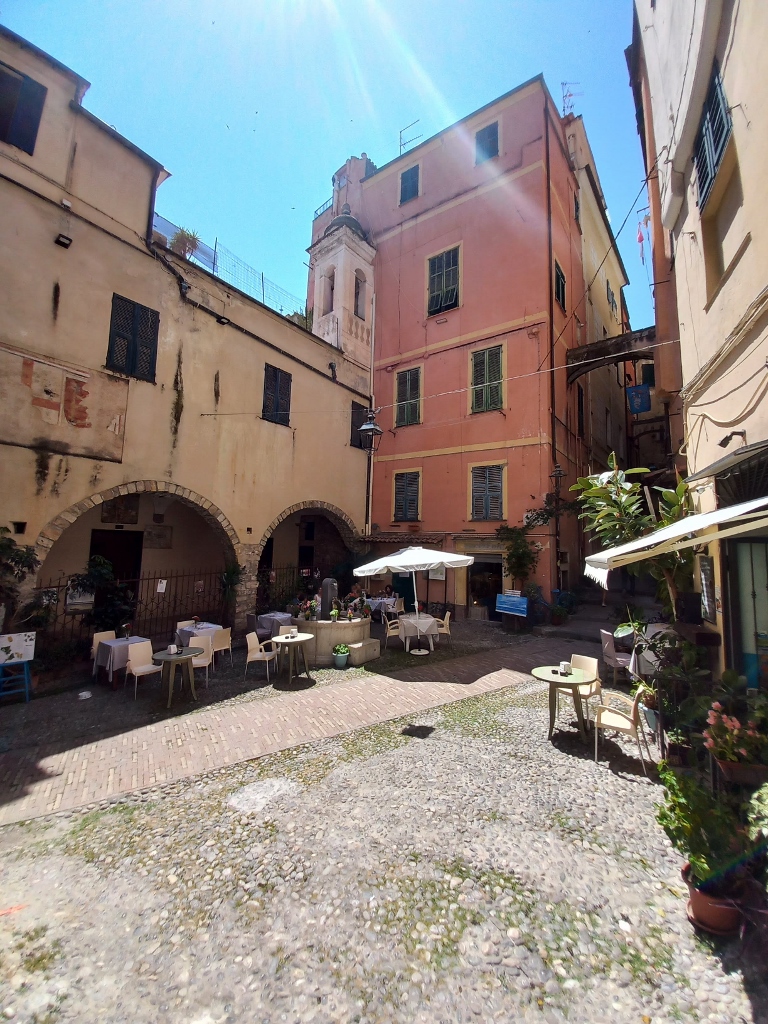 Sanremo, a detail
Sanremo, a detail
It was Piazza dei Dolori, where I sat down to have something refreshing to drink.
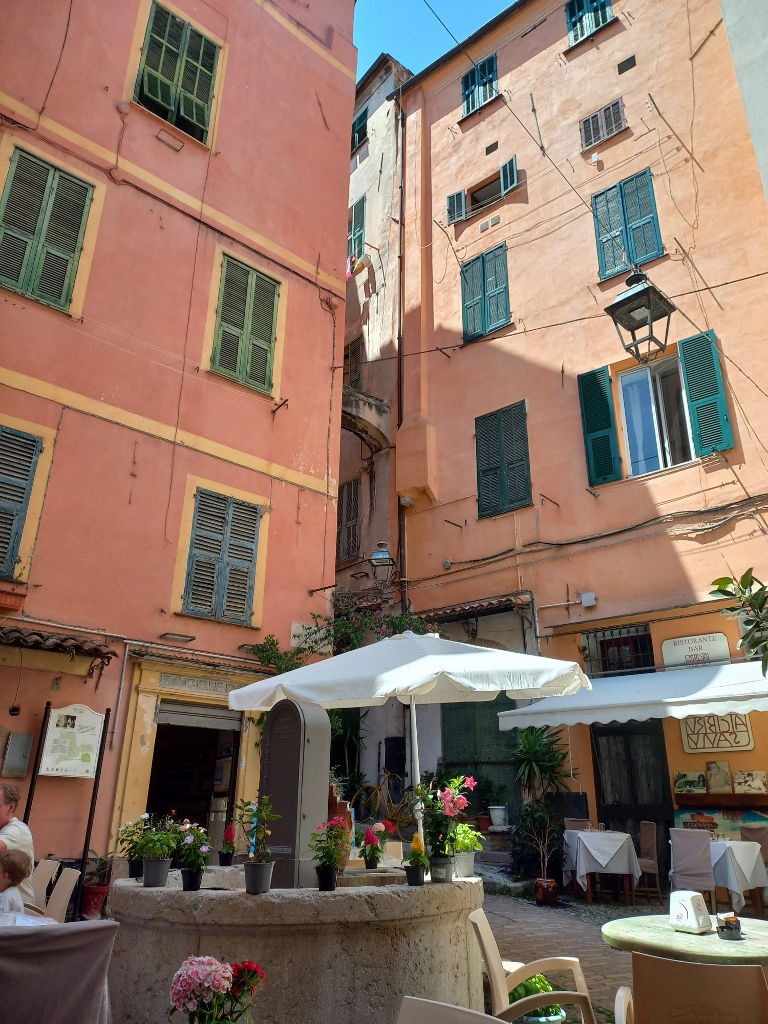 Sanremo, a detail
Sanremo, a detail
That’s when I remembered to order a “caffè shakerato,” the name of which comes from the English word "shaken," thus meaning “shaken coffee.” Francesco had drawn my attention to this type of coffee, so even without his company, I wanted to try it prepared exactly like that.
I didn’t manage to get a good photo of the coffee in Sanremo, but that wasn’t a reason not to make one once I got back home. Here’s what it looks like, along with the recipe:
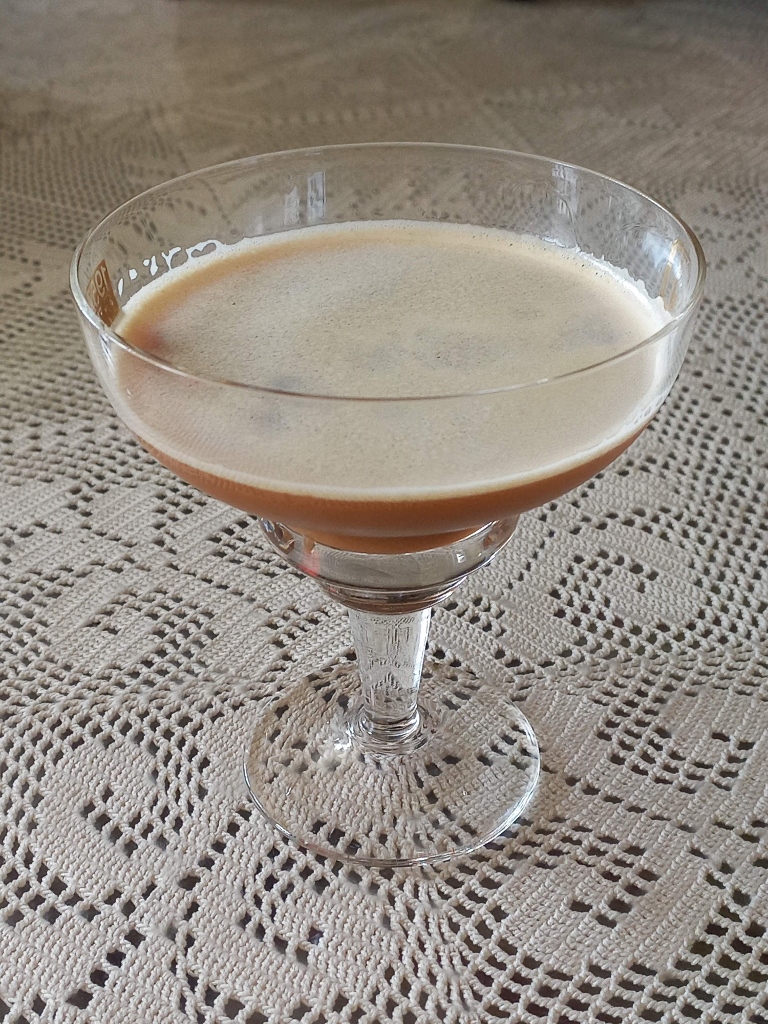 Caffè Shakerato
Caffè Shakerato
CAFFÈ SHAKERATO
- 1 espresso
- a couple of ice cubes
- simple sugar syrup (or Baileys liqueur can also be used)
- a little milk (to taste)
You need a shaker. Put all the ingredients into it and shake them. When foam forms, the coffee is ready and needs to be poured into a cocktail glass of your choice.
After I refreshed and rested nicely, it was a hot summer day after all and I needed a break, I continued my walk and exploration of the Old Town, now heading downhill along the chosen path.
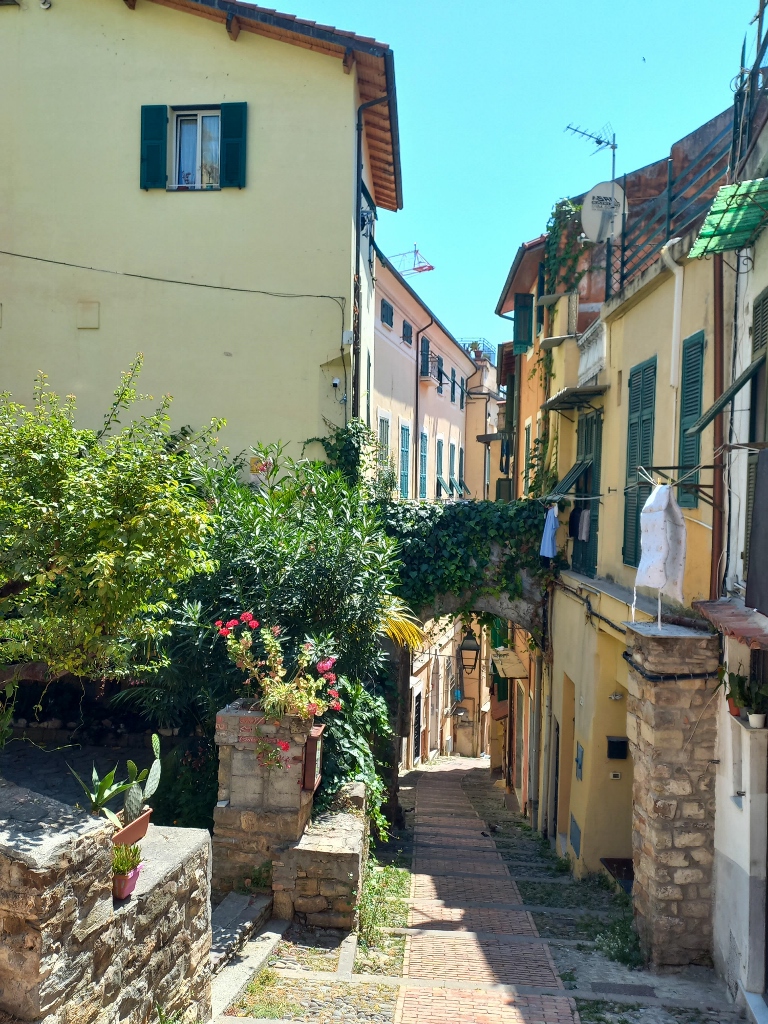 Sanremo, a detail
Sanremo, a detail
Sanremo is truly full of flowers and it’s not just those grown for sale, but rather one gets the impression that they grow everywhere.
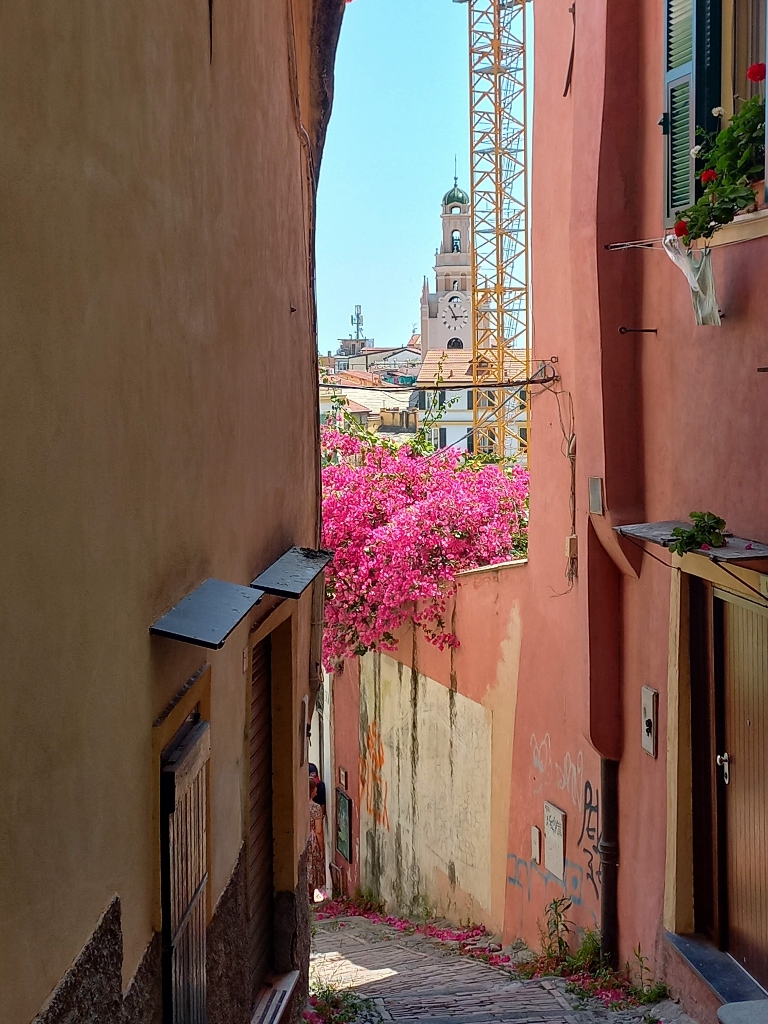 Sanremo, a detail
Sanremo, a detail
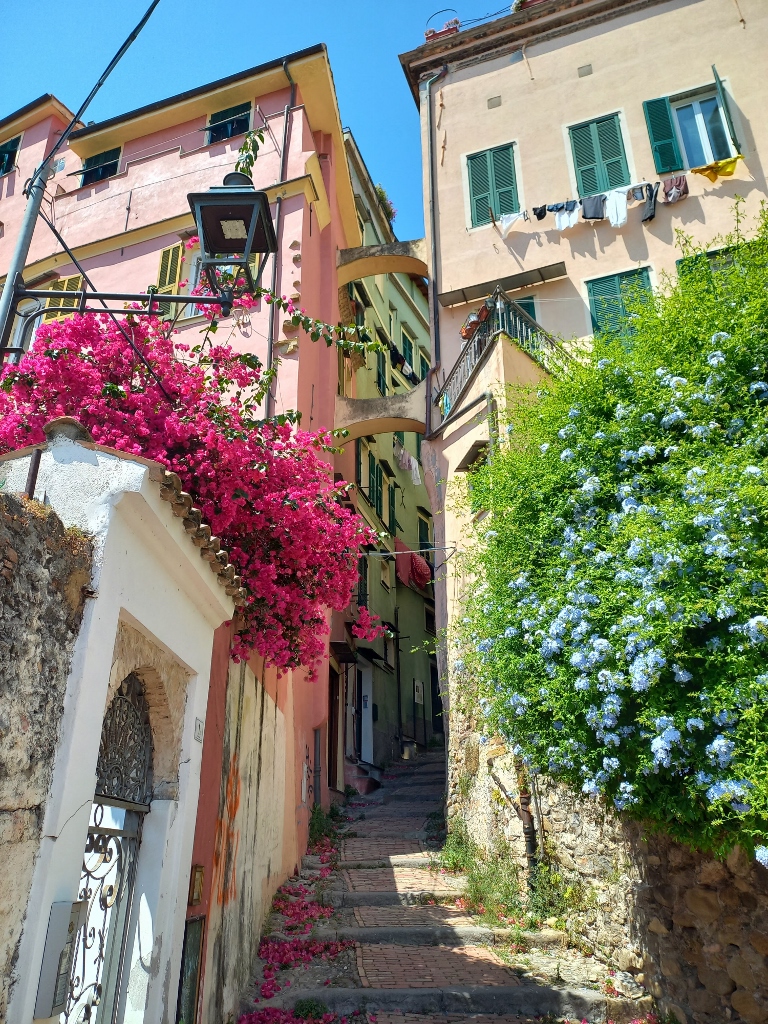 Sanremo, a detail
Sanremo, a detail
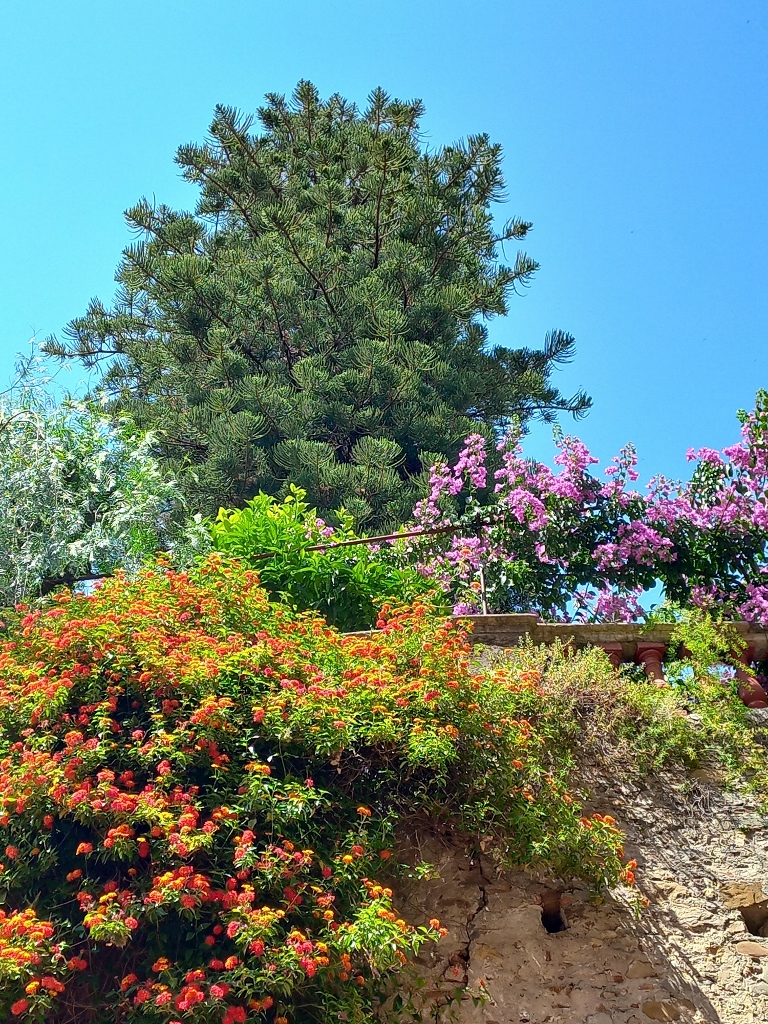 Sanremo, a detail
Sanremo, a detail
I descended down to the flatter parts of the city, passing by the Saracen Tower. From the flat area where the tower stands, you can see parts of the Old Town, as well as the stairs I used to come down.
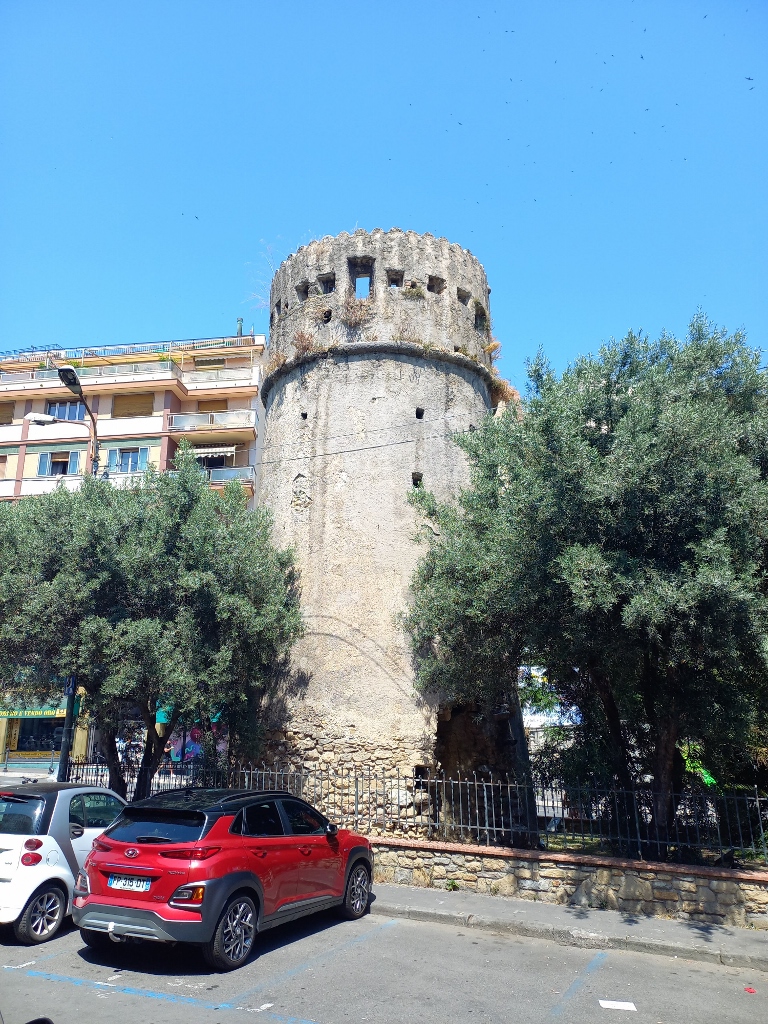 Sanremo, a detail
Sanremo, a detail
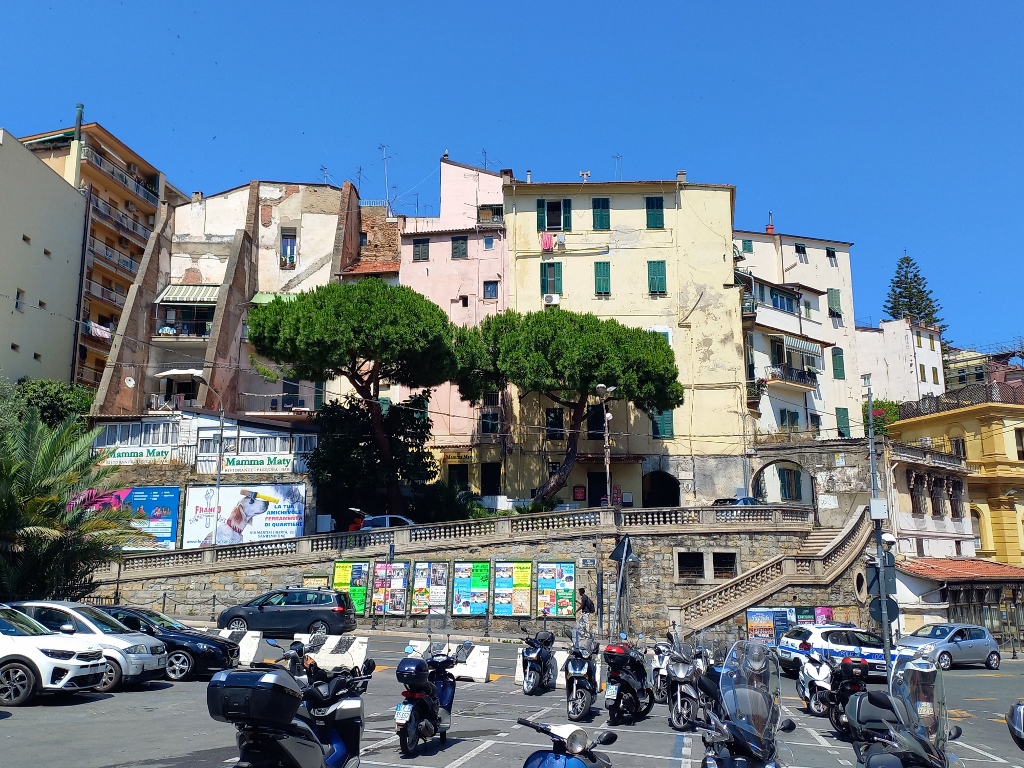 Sanremo, a detail
Sanremo, a detail
Now I continued on towards the Co-Cathedral of San Siro.
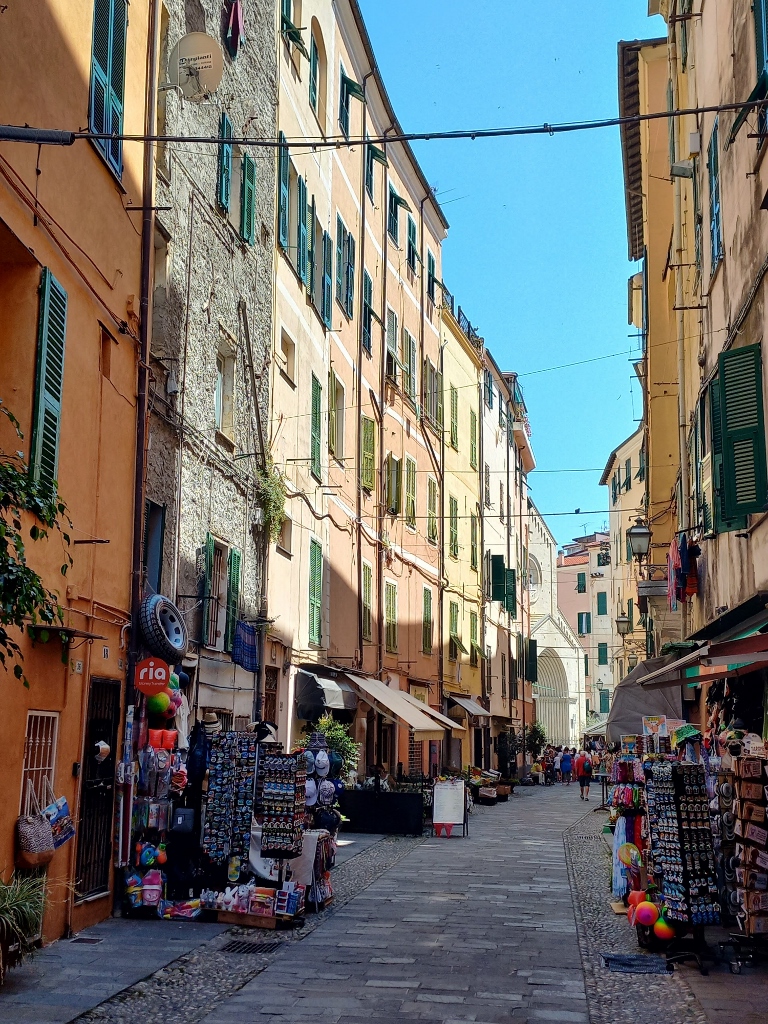 Sanremo, a detail
Sanremo, a detail
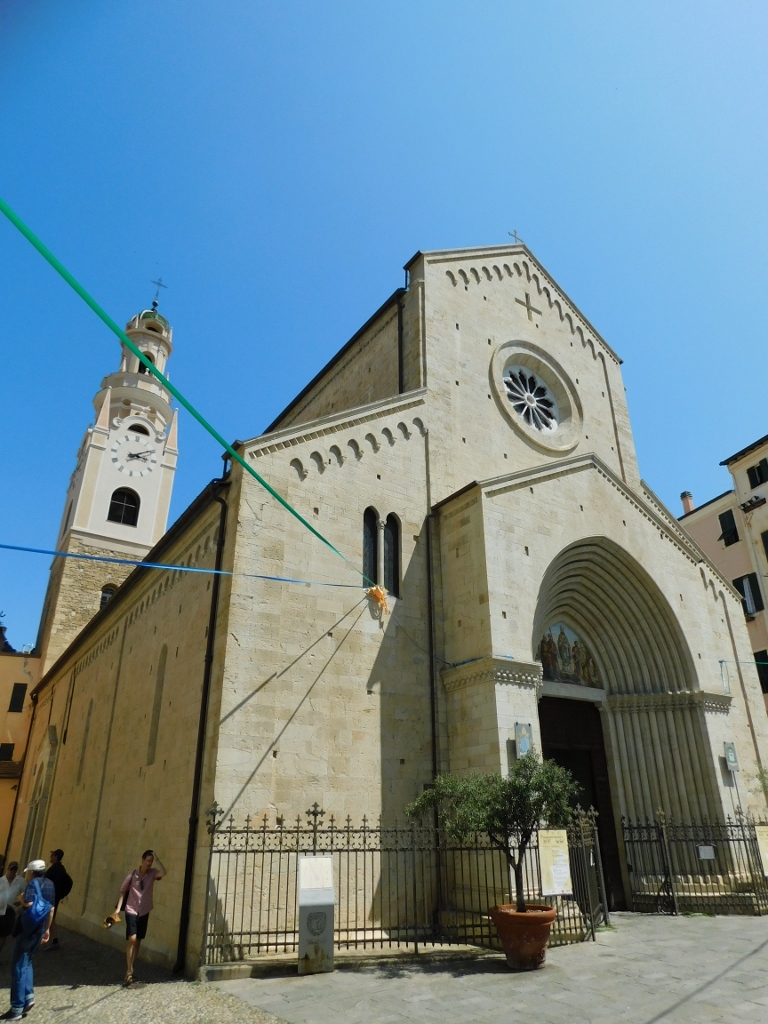 Co-Cathedral of San Siro
Co-Cathedral of San Siro
This is the oldest religious building in Sanremo, built in the 12th century. Over time, it was damaged, destroyed and looted, and during renovations and rebuilding, it even acquired a Baroque appearance. However, in the 20th century, the cathedral was restored to its original Romanesque-Gothic style.
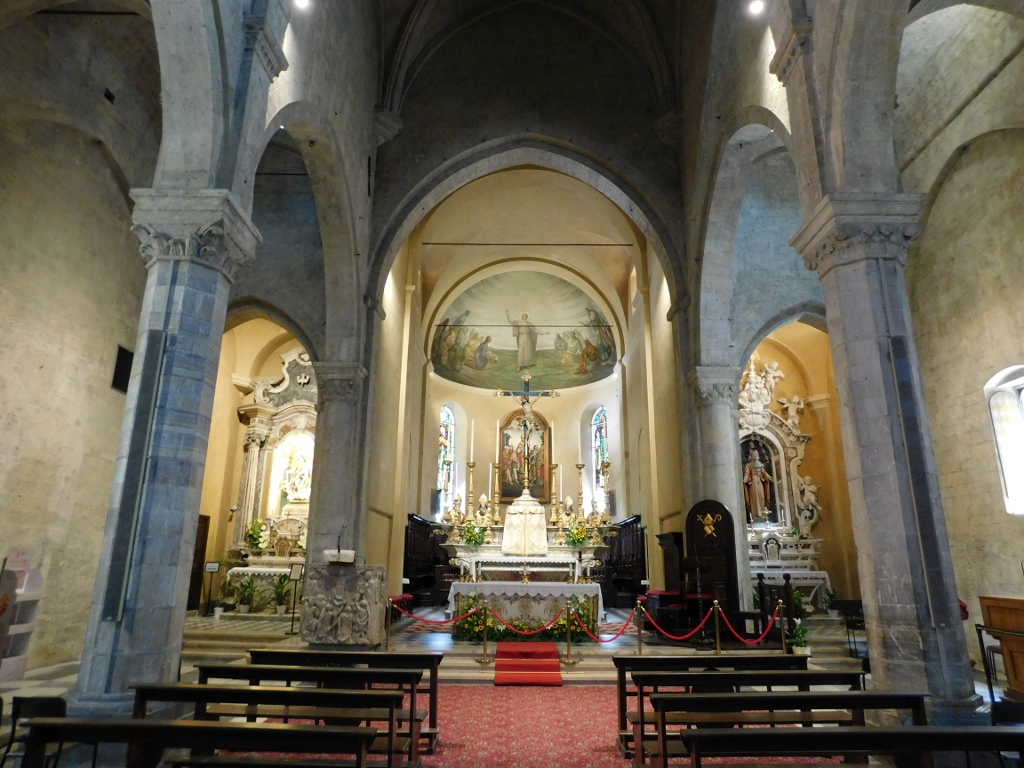 Co-Cathedral of San Siro
Co-Cathedral of San Siro
After visiting the church, I continued walking around Sanremo, trying to stay in the shade wherever possible. Fortunately, my route took me through narrow streets between tall residential buildings.
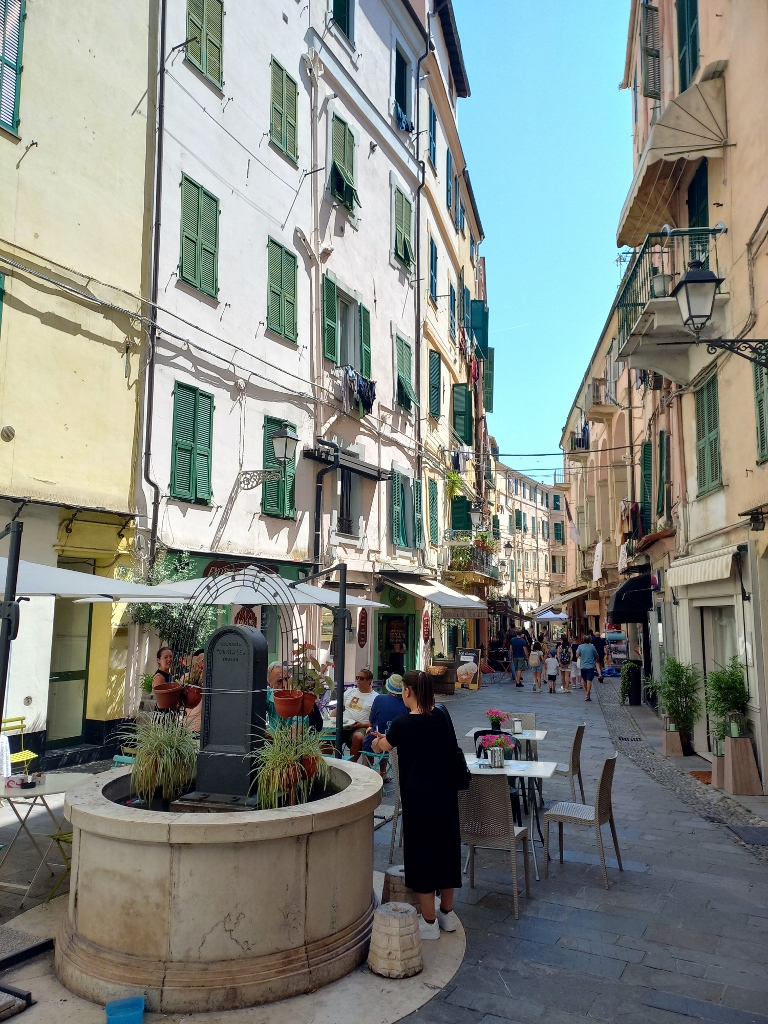 Sanremo, a detail
Sanremo, a detail
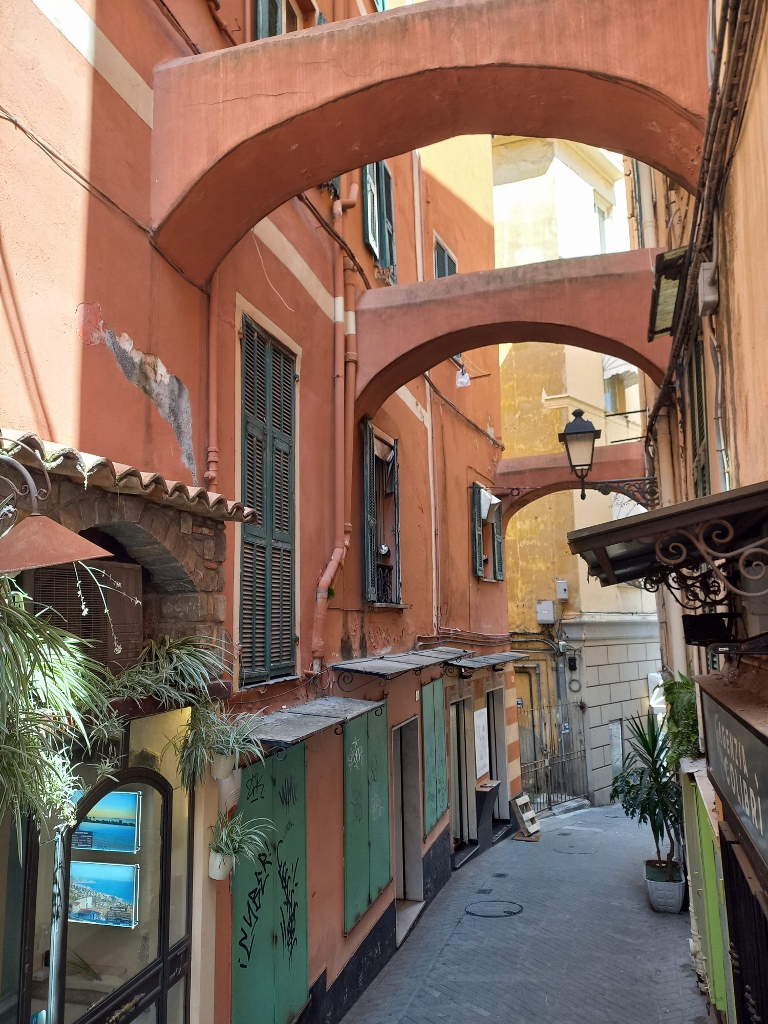 Sanremo, a detail
Sanremo, a detail
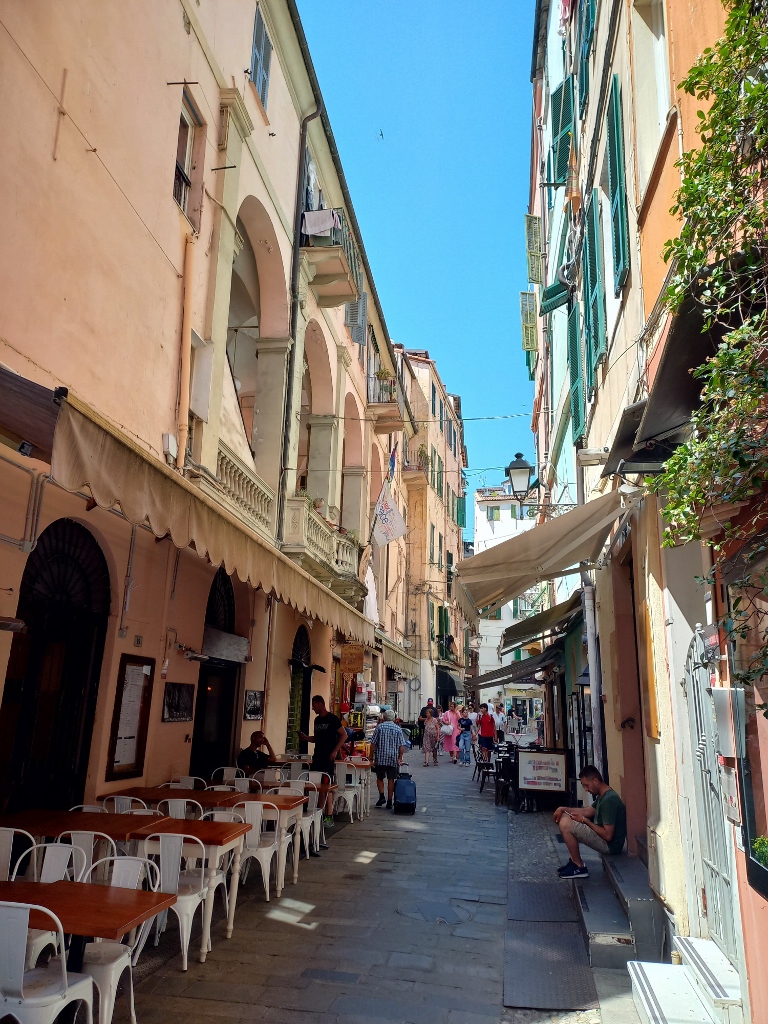 Sanremo, a detail
Sanremo, a detail
But at one point, I reached a pedestrian street that, due to its position relative to the sun, had no shade at all. So I would occasionally step into a shop to cool down briefly. Still, I didn’t give up and kept exploring Sanremo. Along the way, I passed by the Church of the Friars Minor Capuchin. This church belongs to the Capuchin Order that separated from the Franciscan Order in the early 16th century, but is still closely connected to St. Francis. That’s why there is a statue of this well-known and highly respected saint in front of the church.
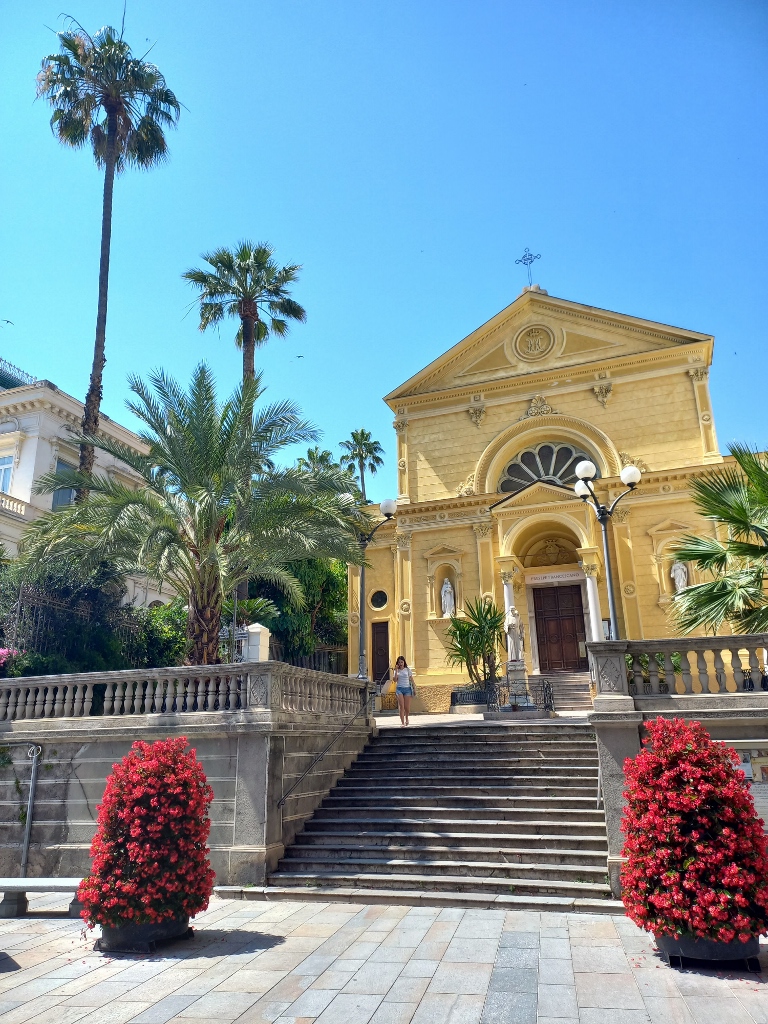 Sanremo, a detail
Sanremo, a detail
Right next to it, on the same side of the street, is the famous Sanremo Casino, which serves not only for gambling, but also as a venue for various entertainment events. In fact, the Sanremo Music Festival was held here in the casino complex from the festival’s inception in 1951 until 1976.
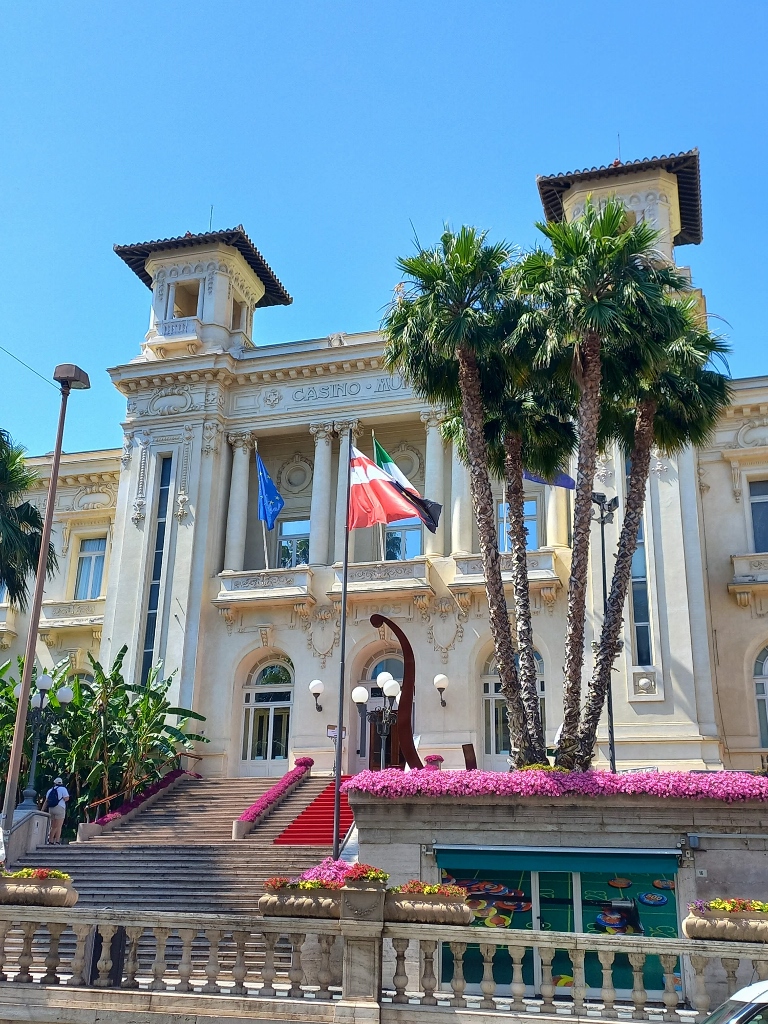 Sanremo, a detail
Sanremo, a detail
The building was opened in 1905 and was designed in the Art Nouveau style.
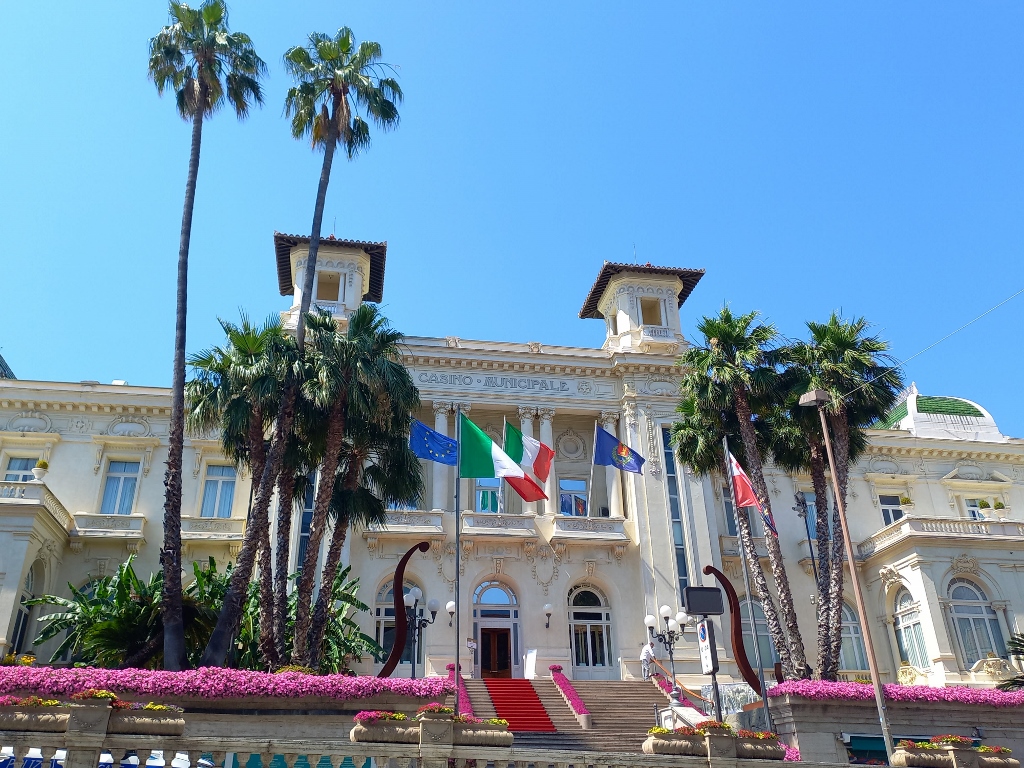 Sanremo, a detail
Sanremo, a detail
About a hundred metres further, on the same side of the main street but down a side street, there is a church I especially wanted to visit and I was actually heading in that direction.
I’ll share more about it in the next instalment of my travel stories from the Italian Riviera where I was in summer 2025.